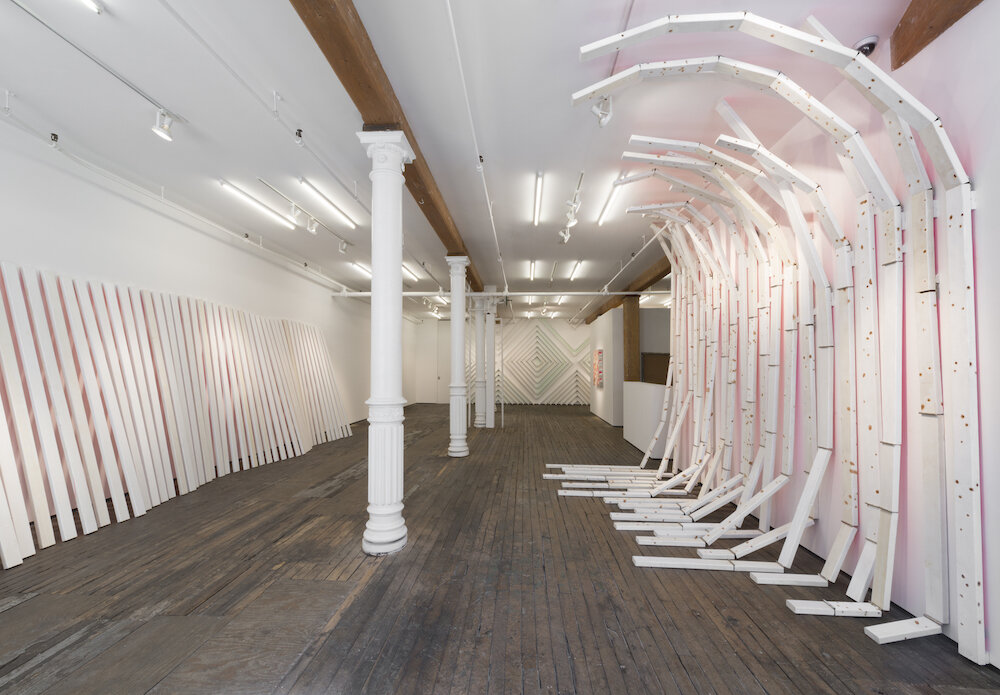
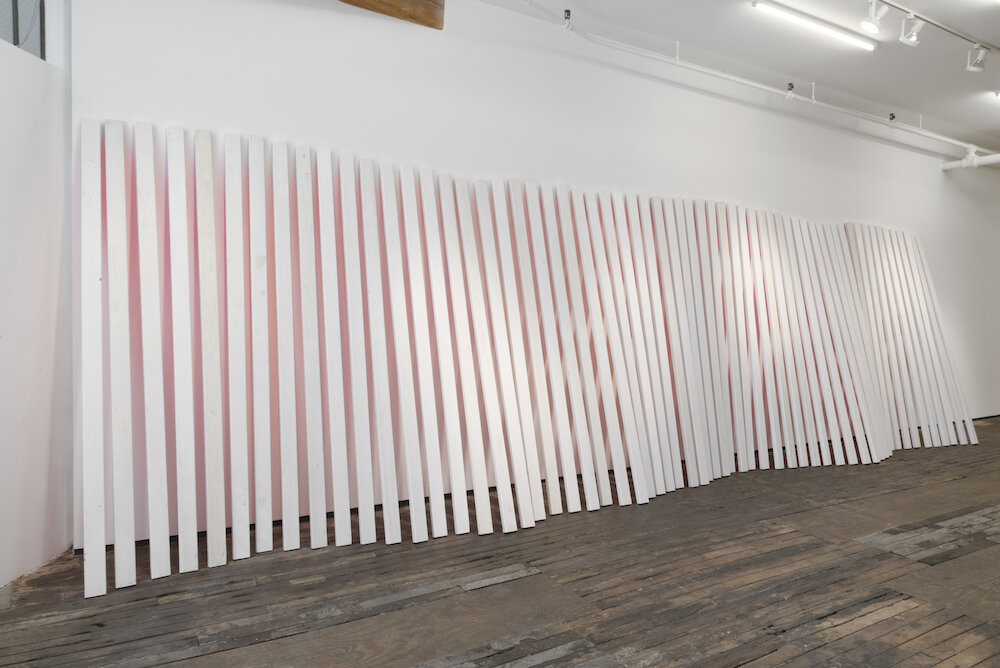

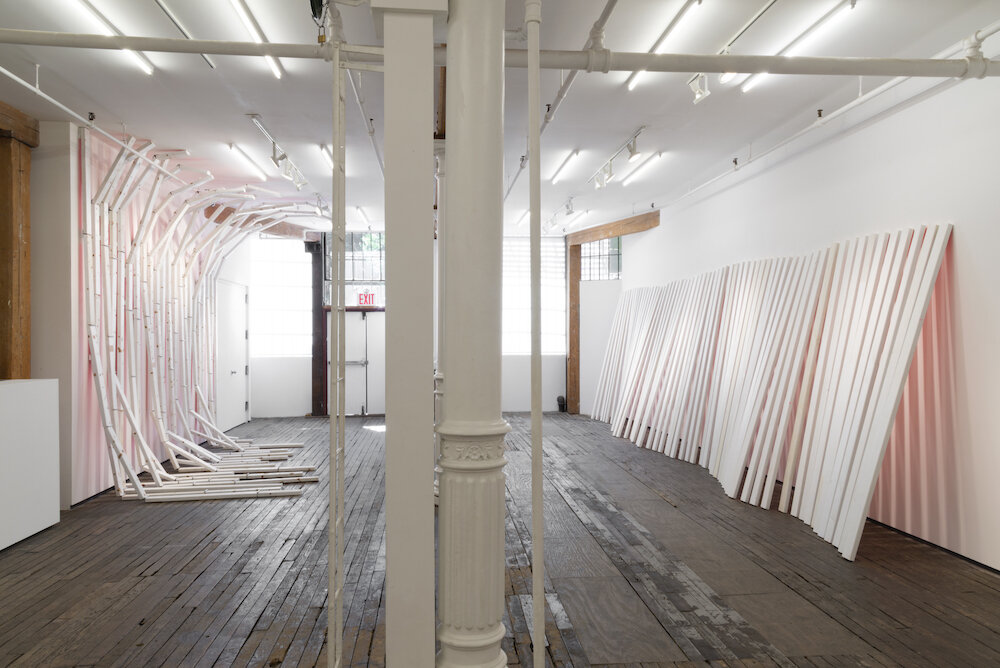

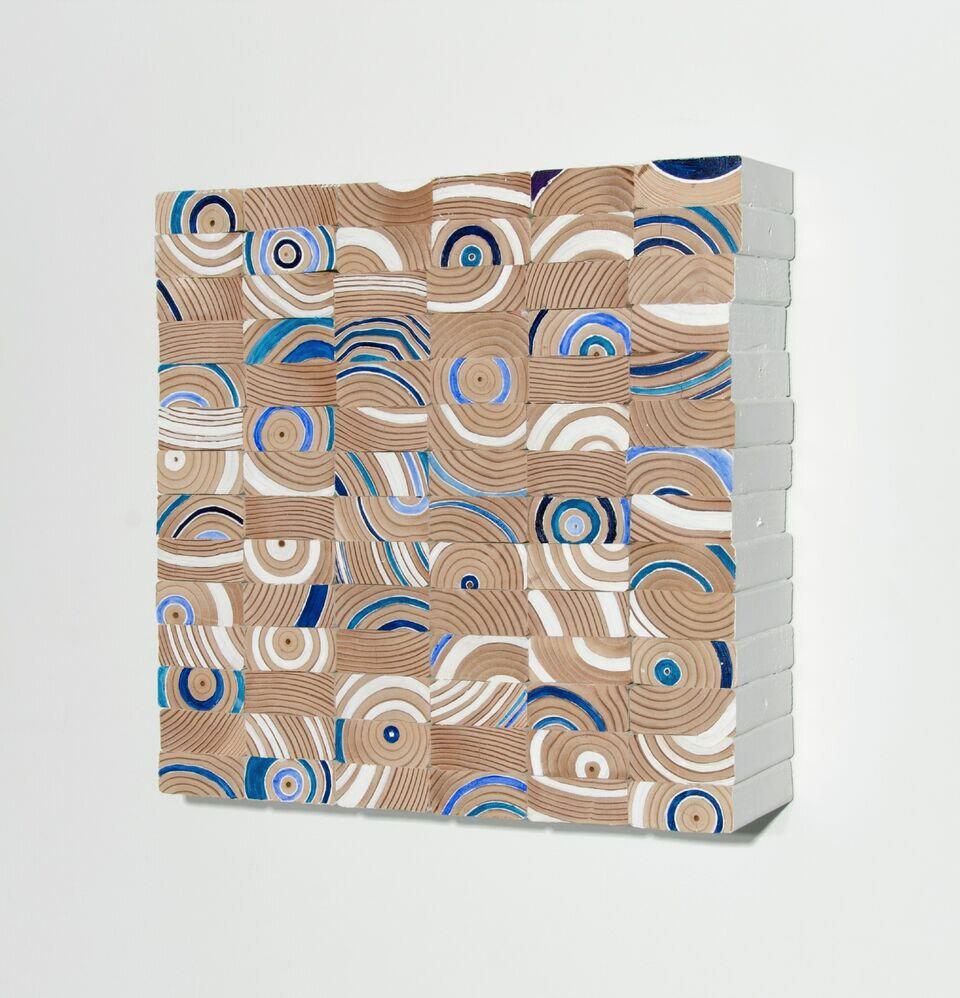
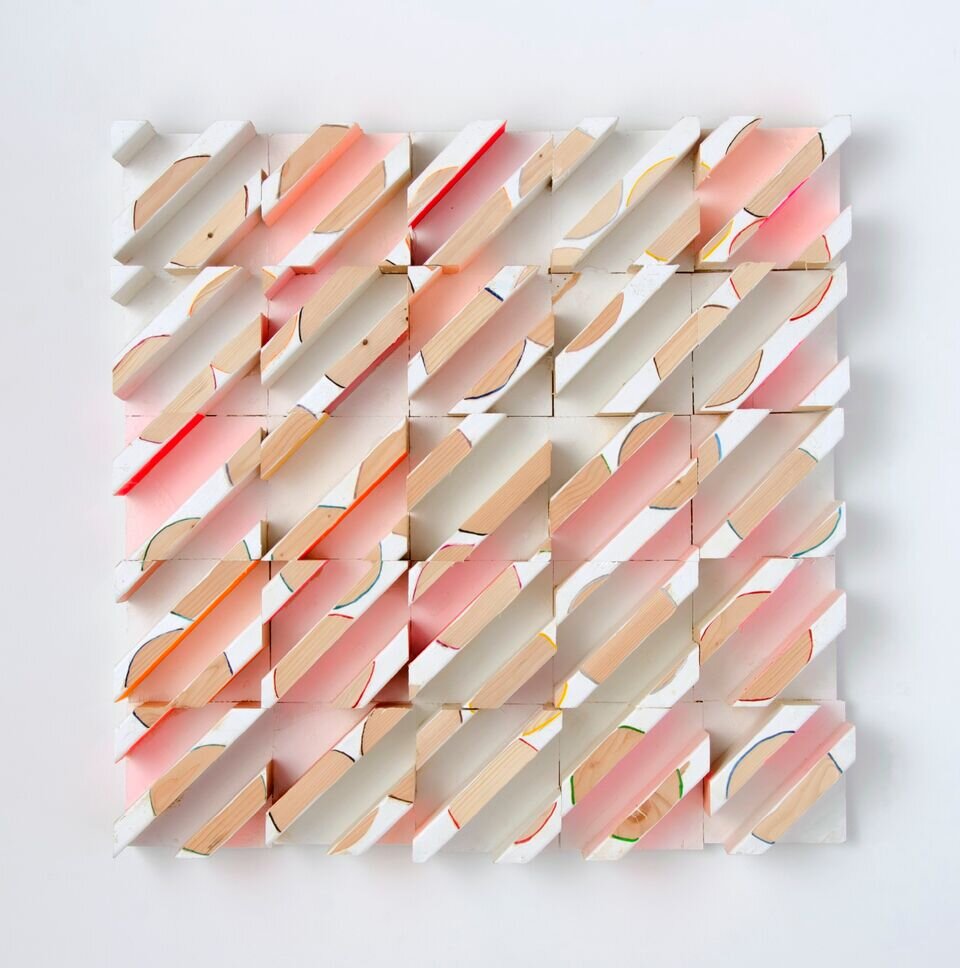
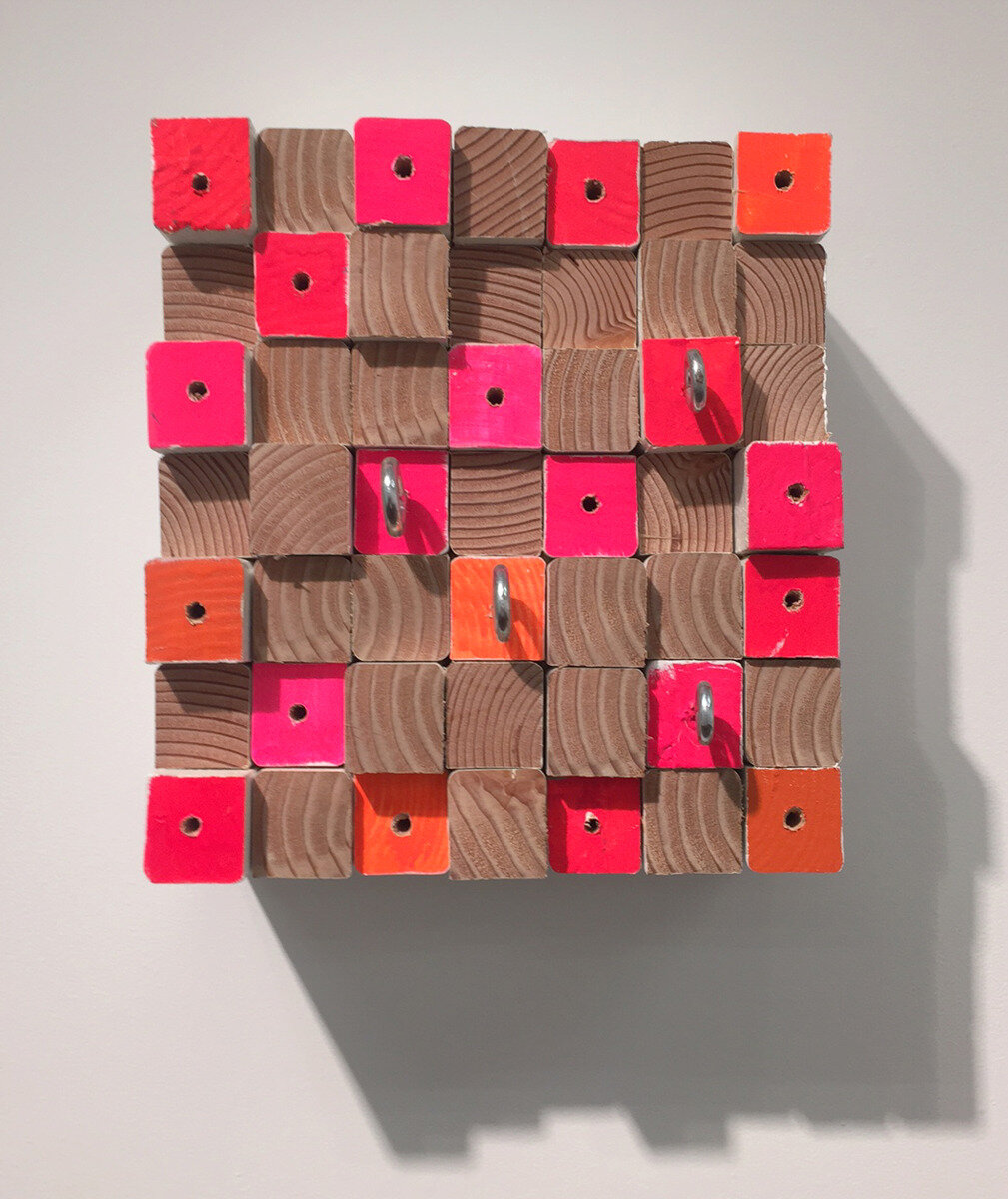

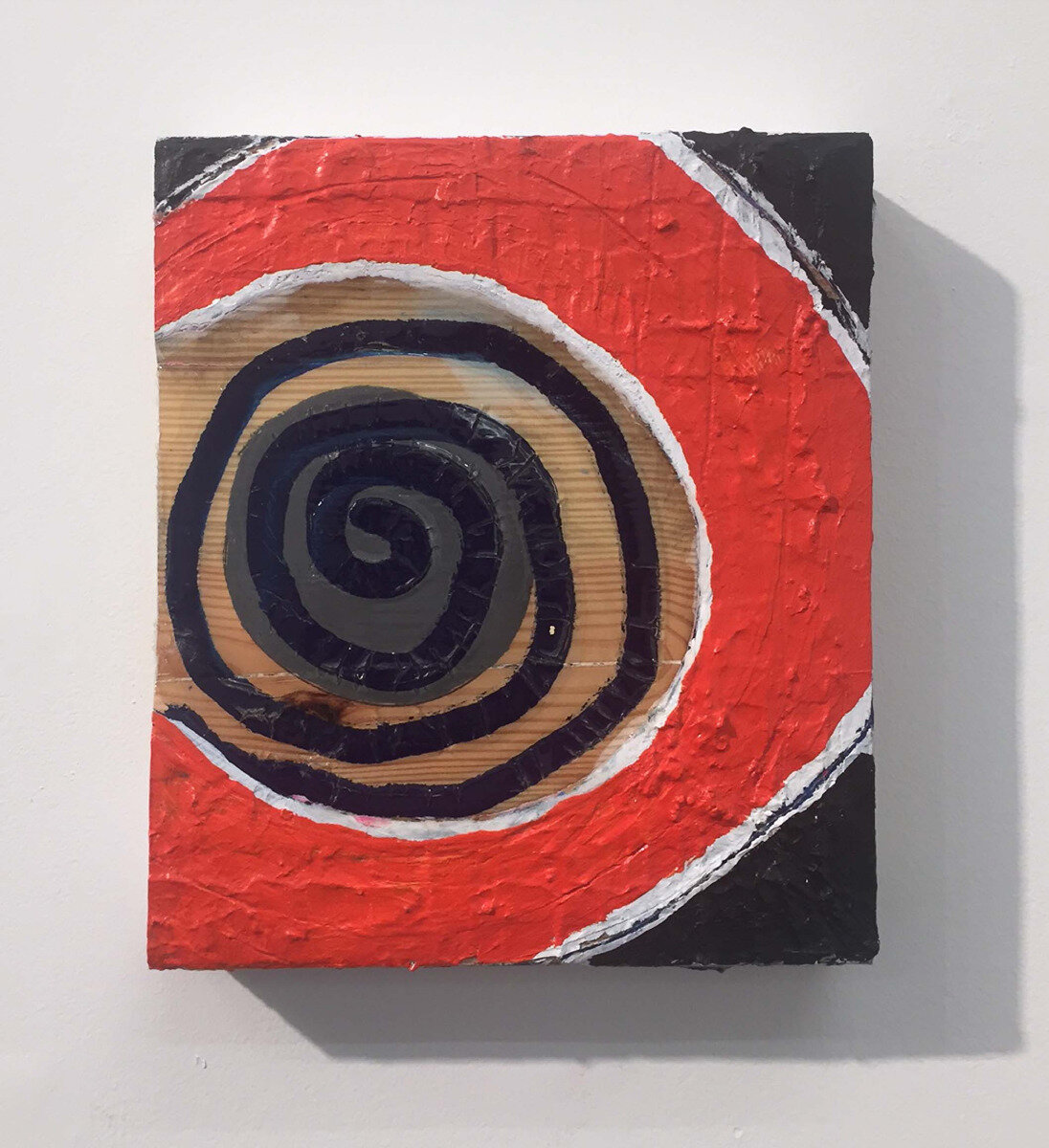
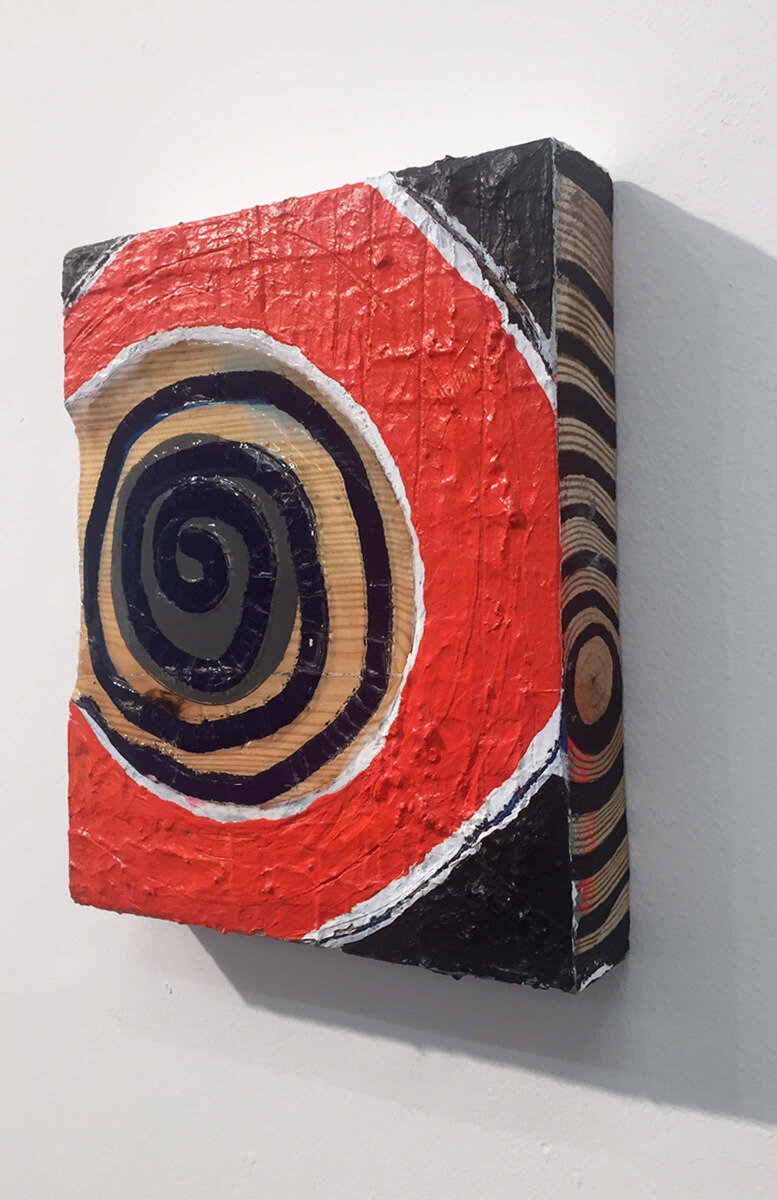
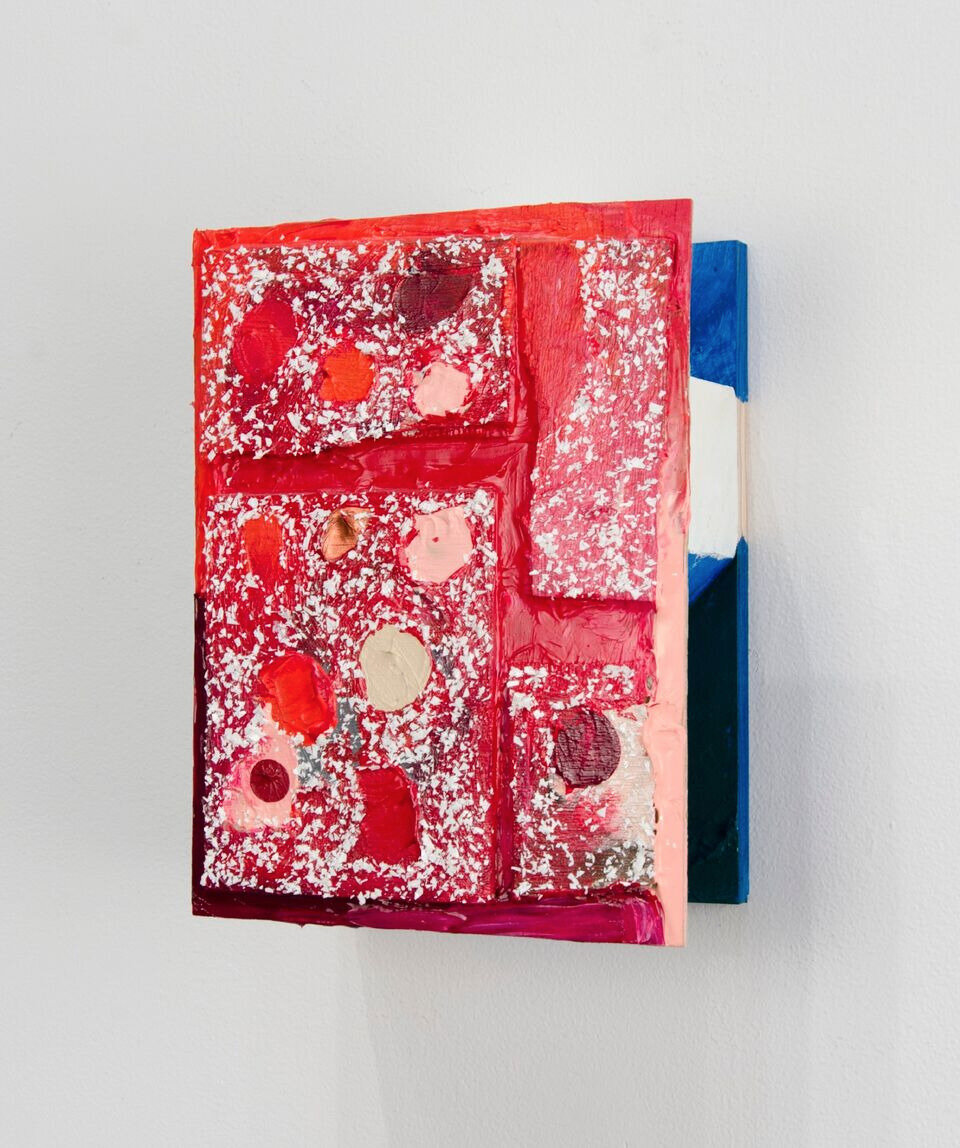
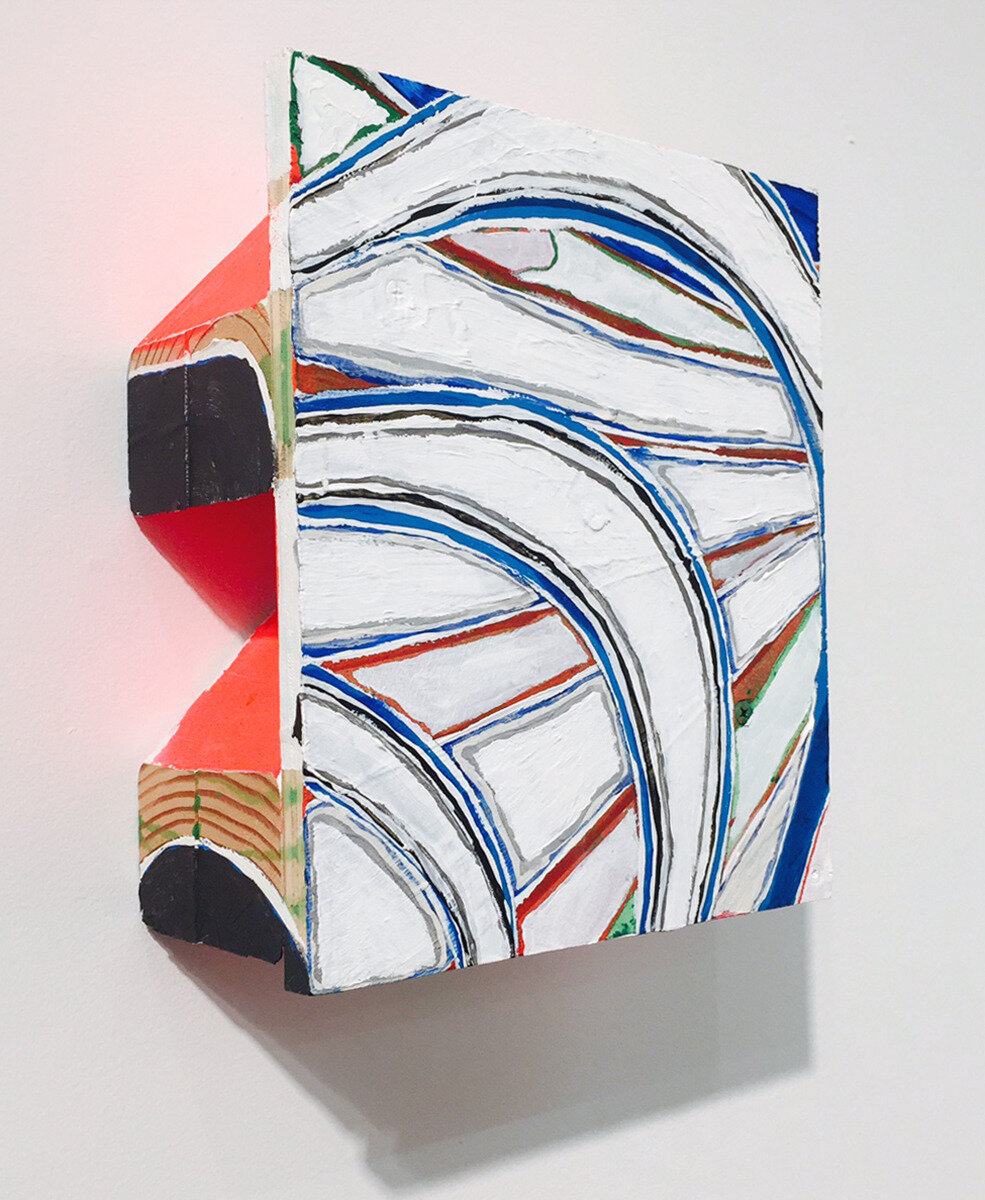

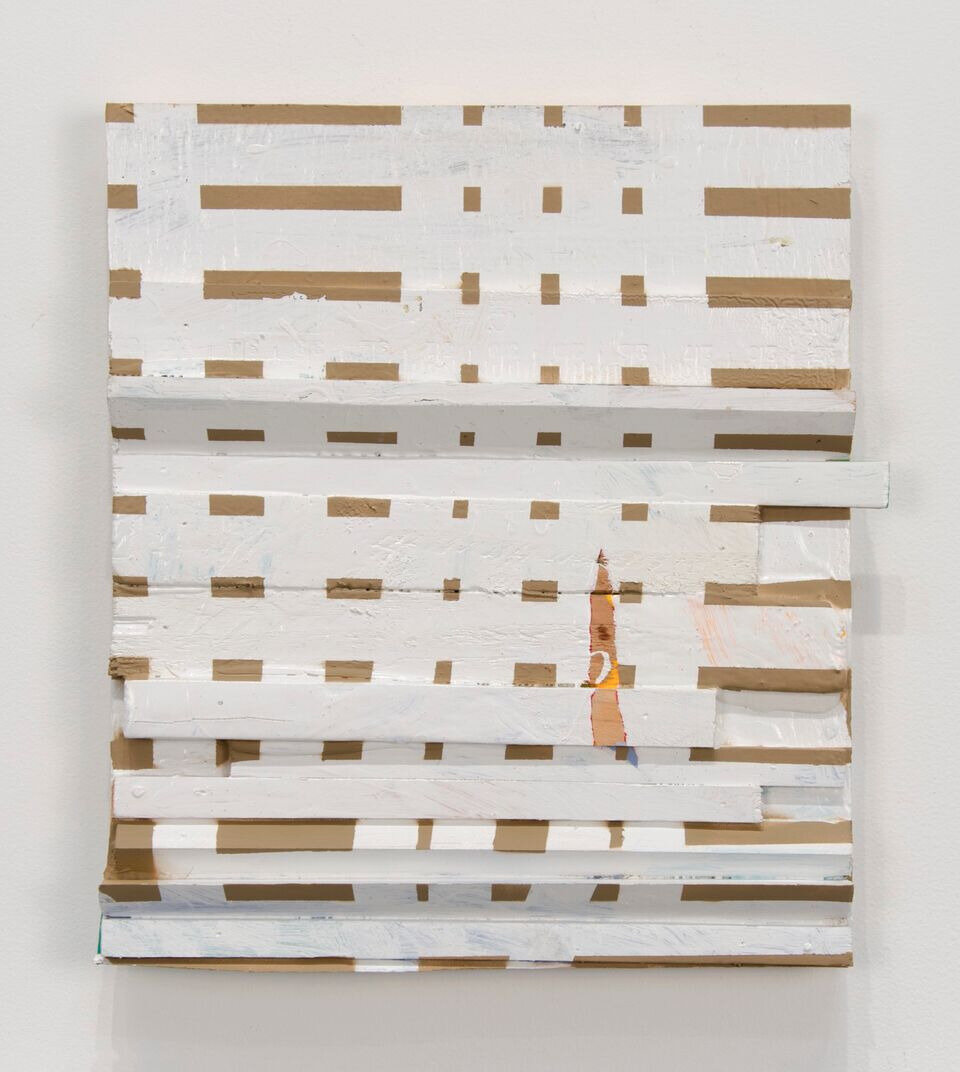
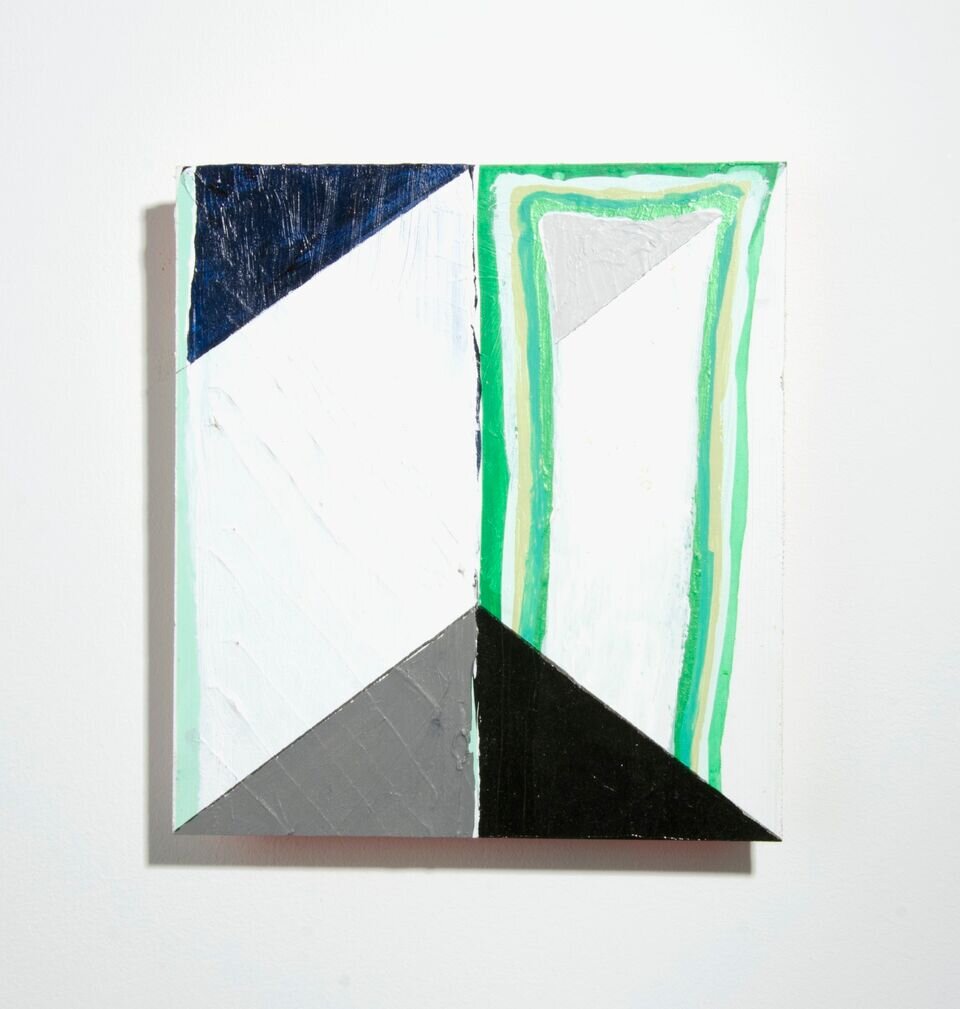
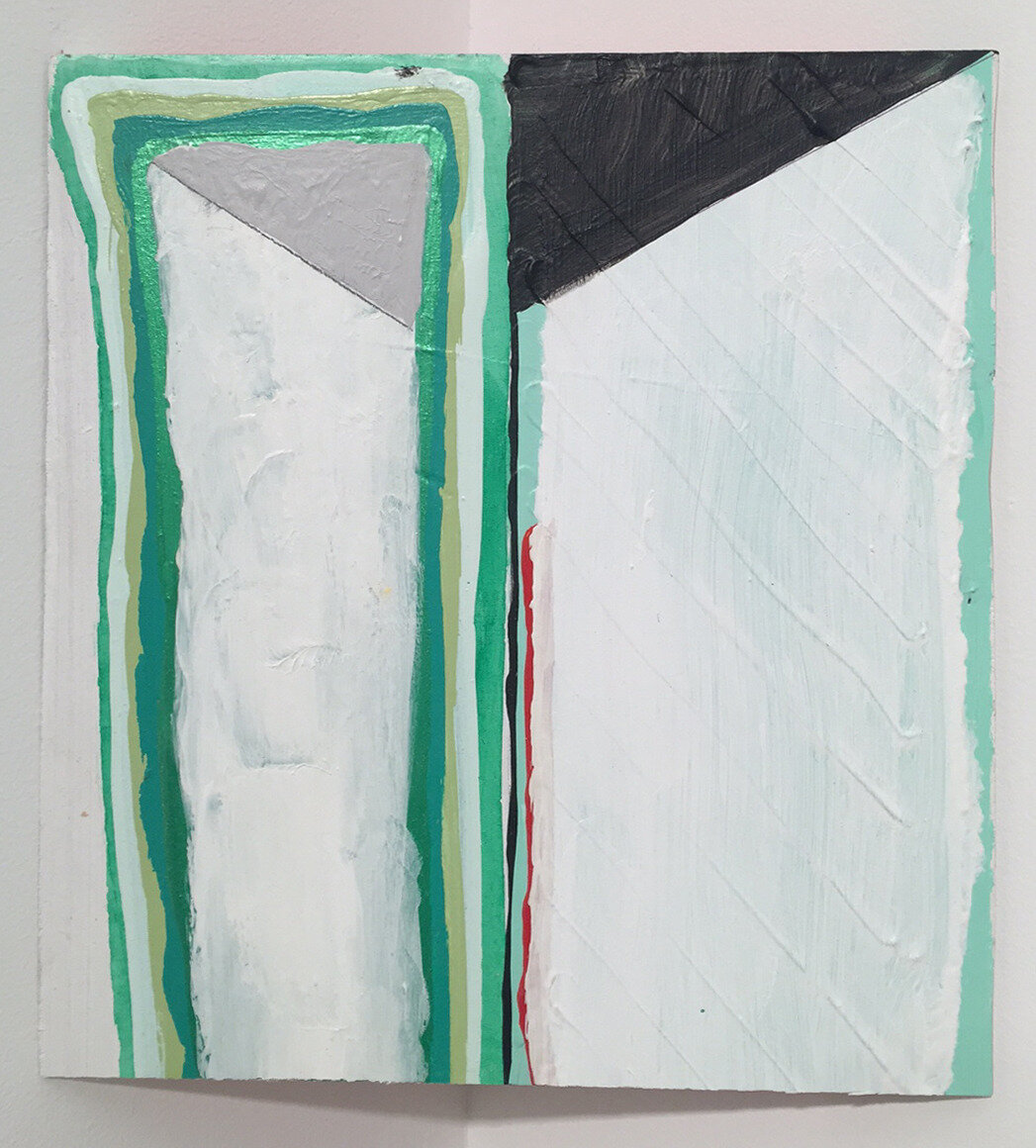
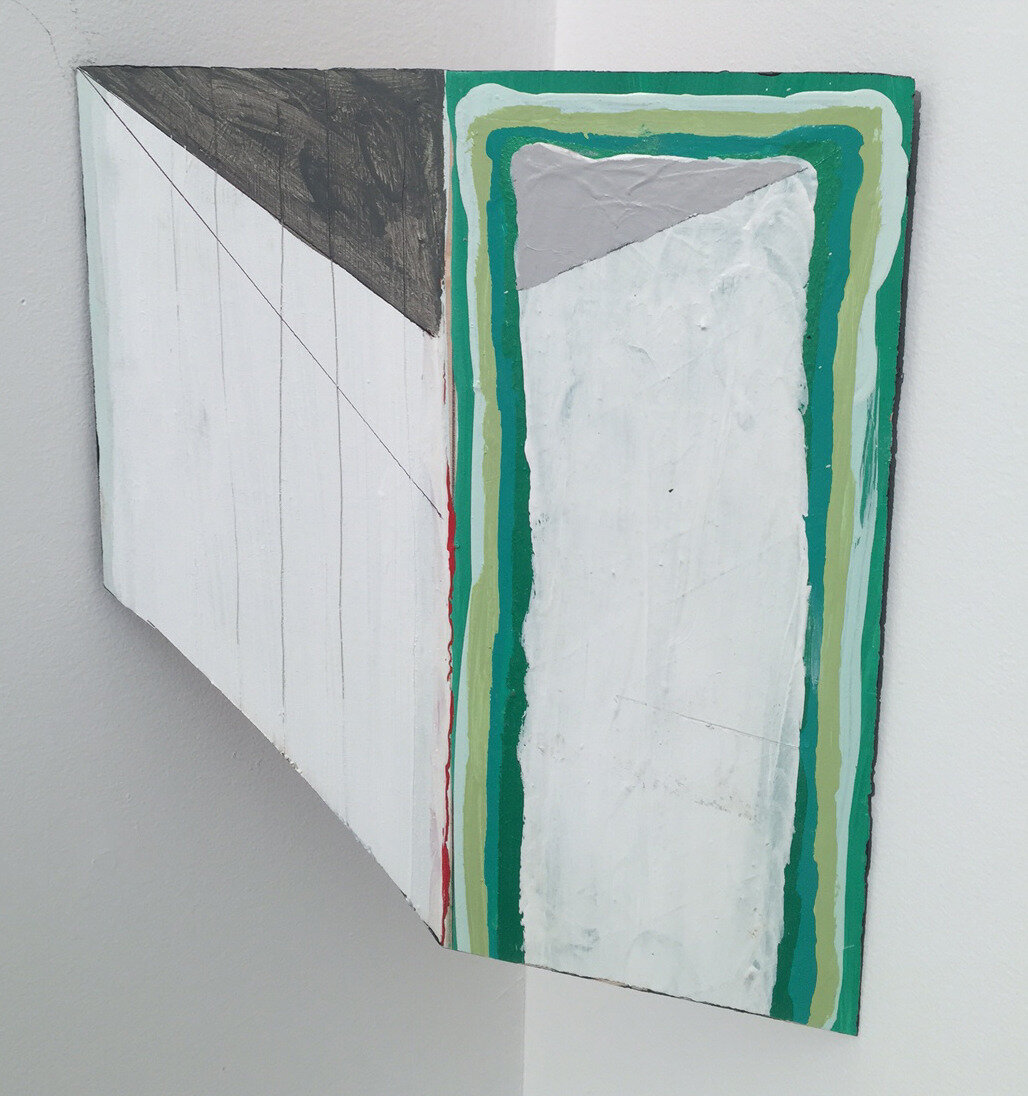
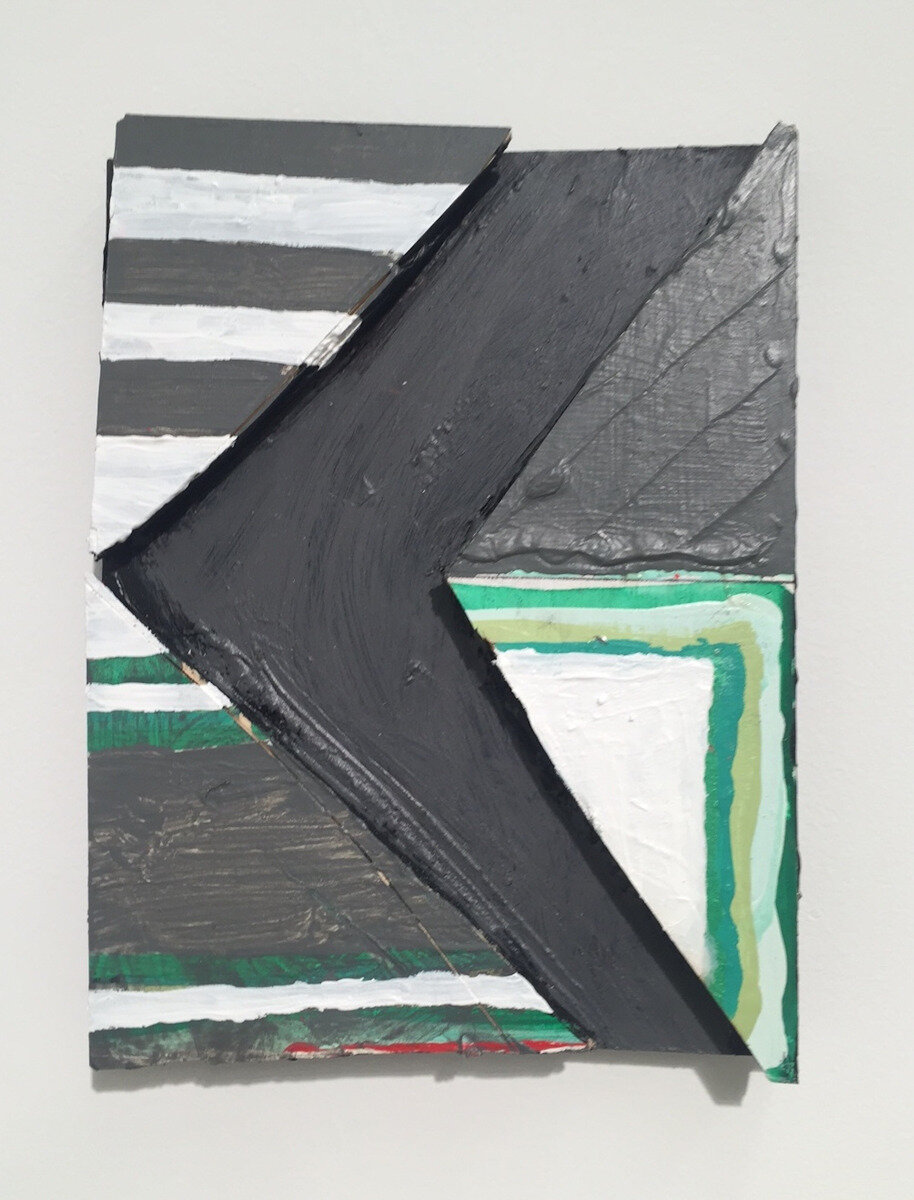

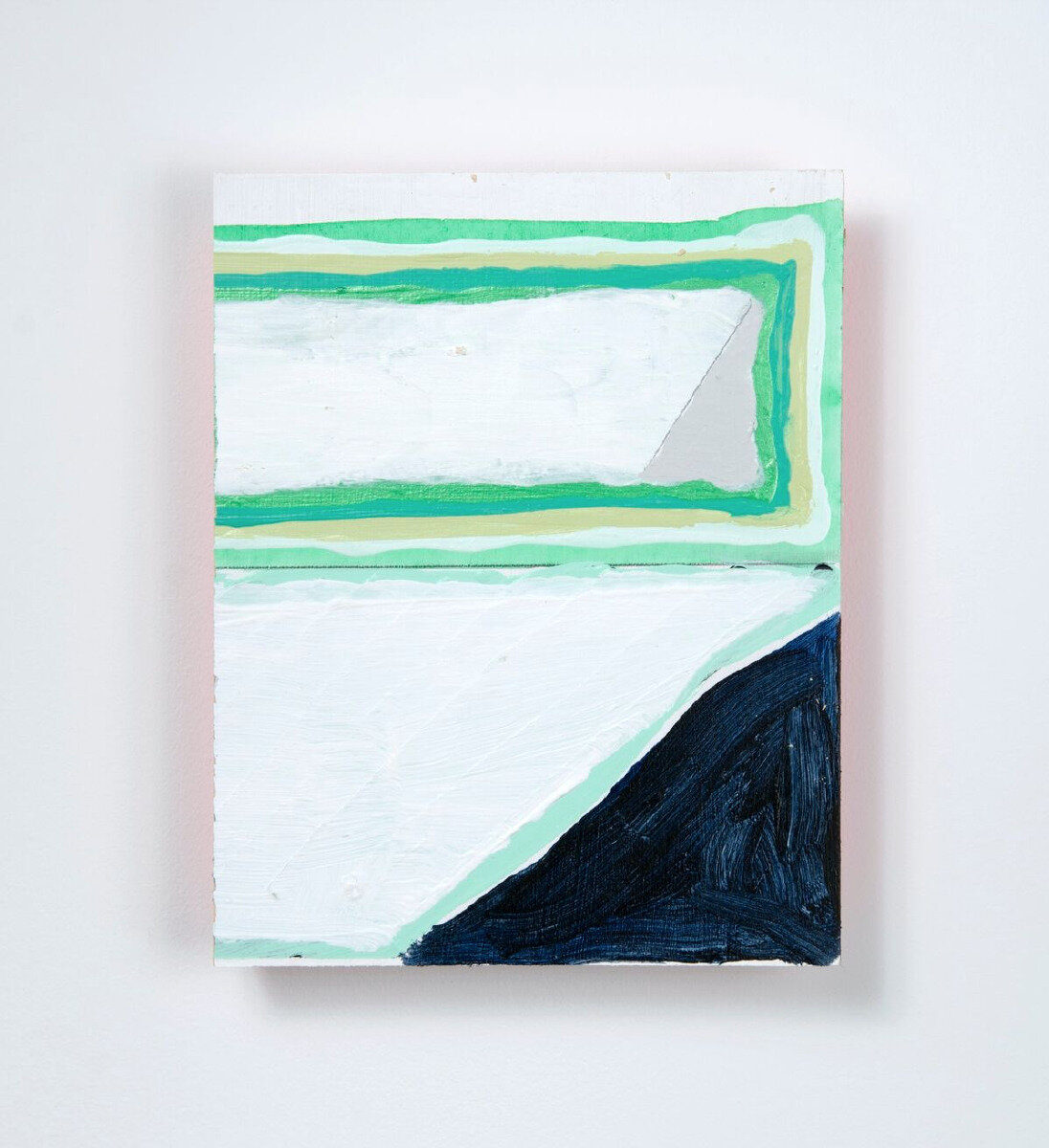
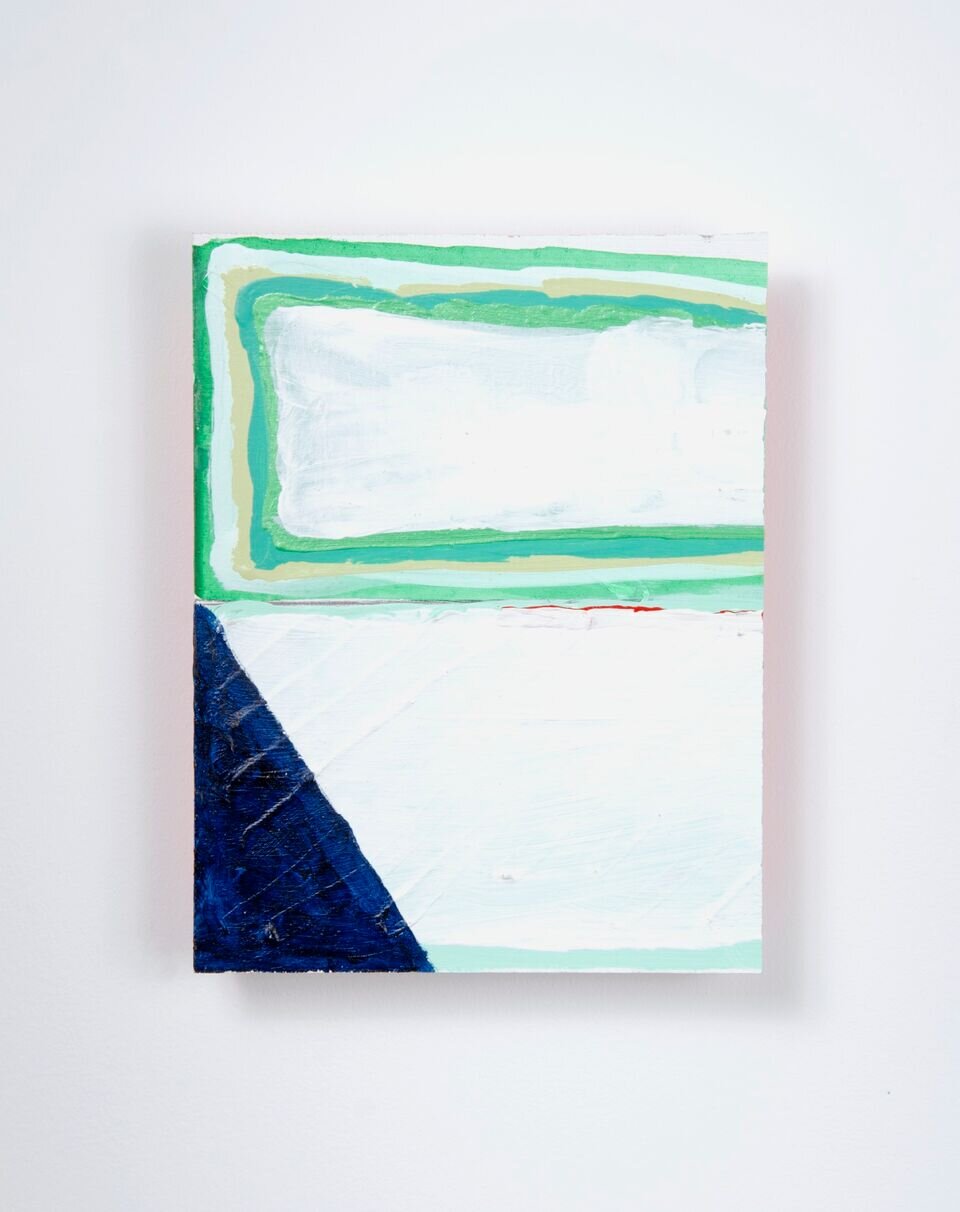
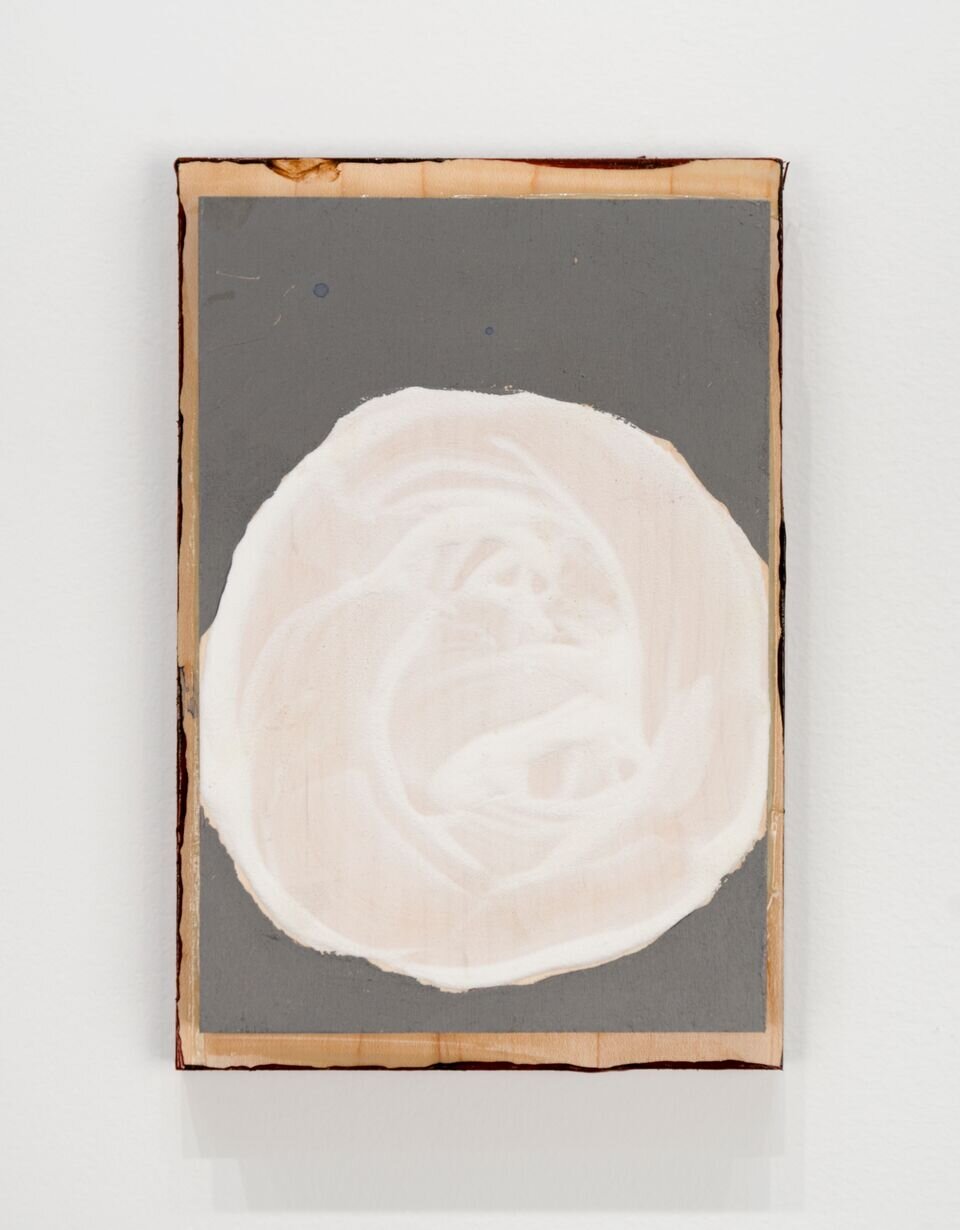
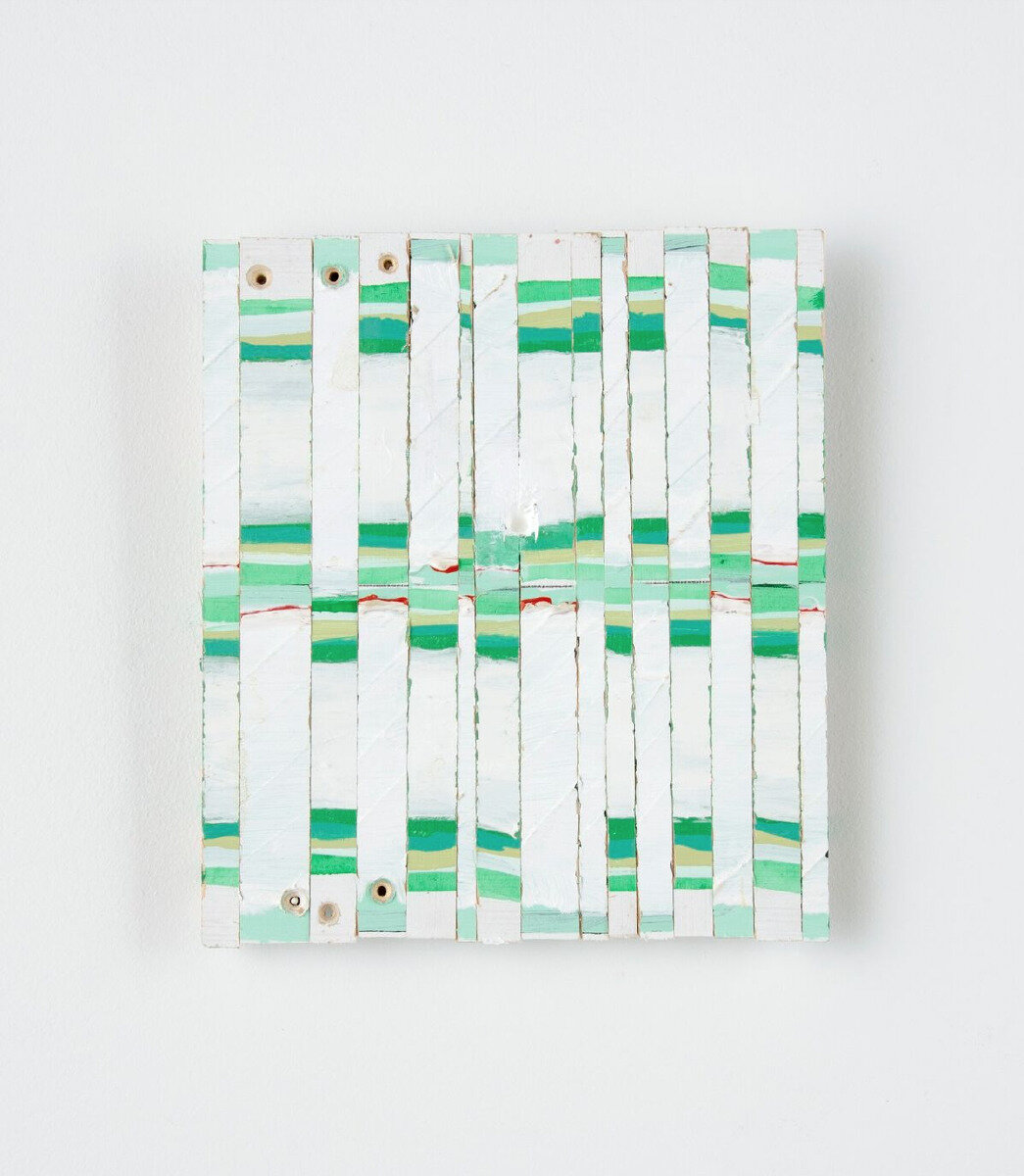

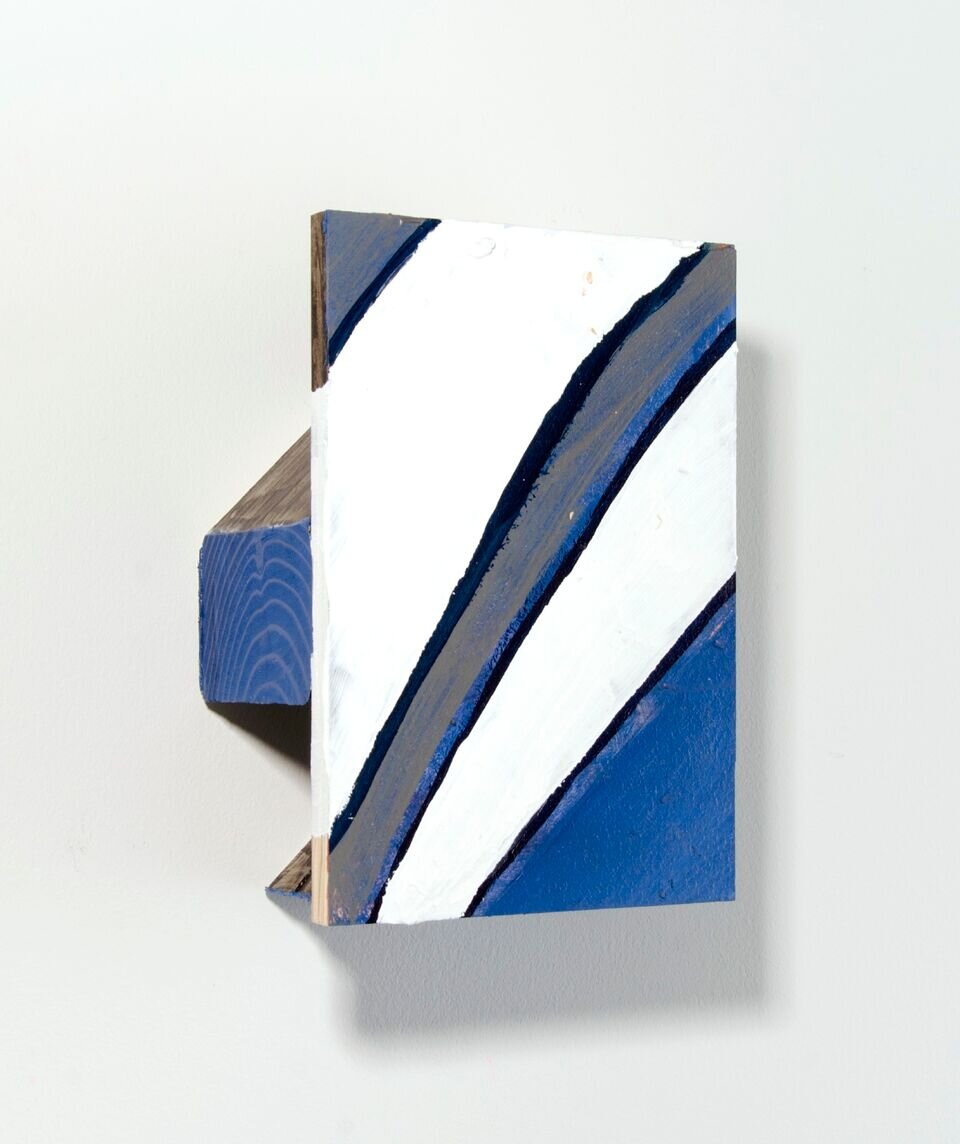
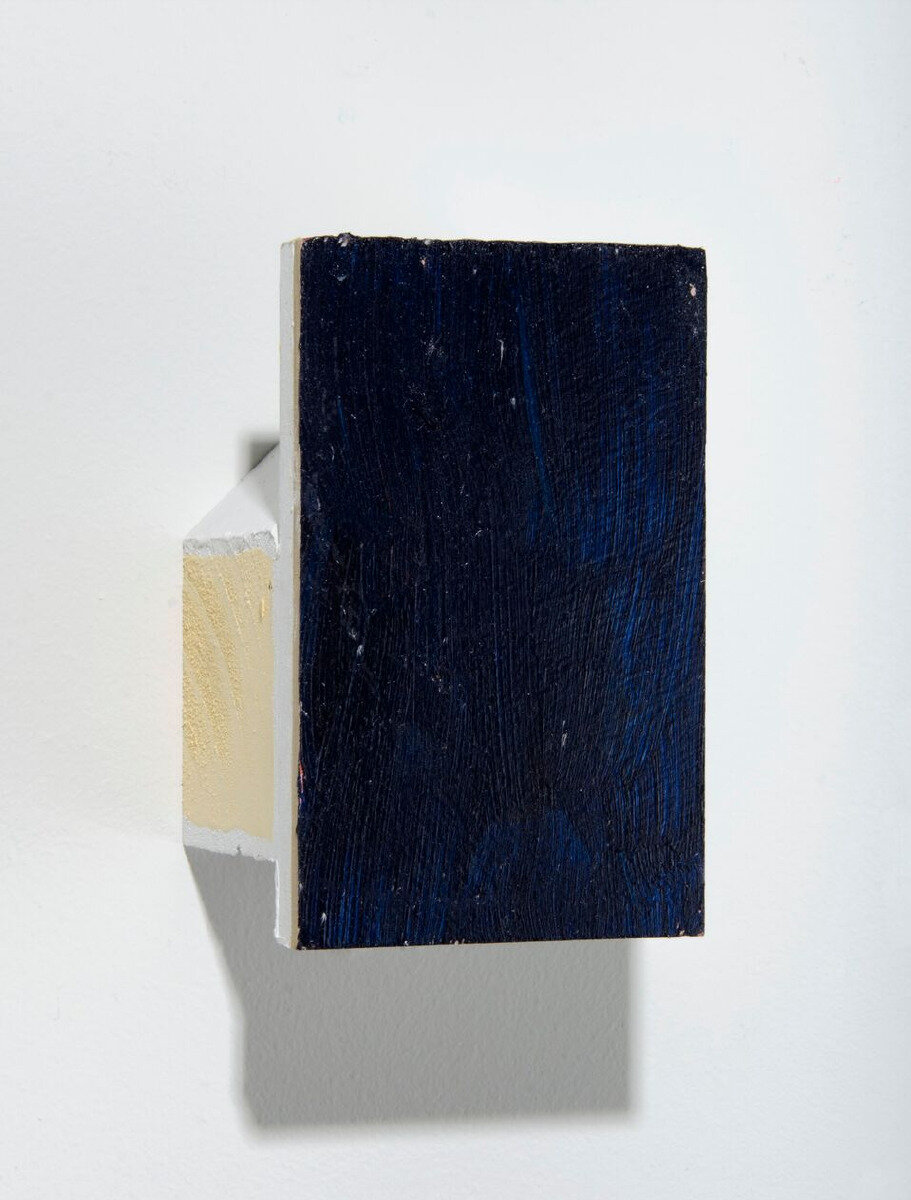
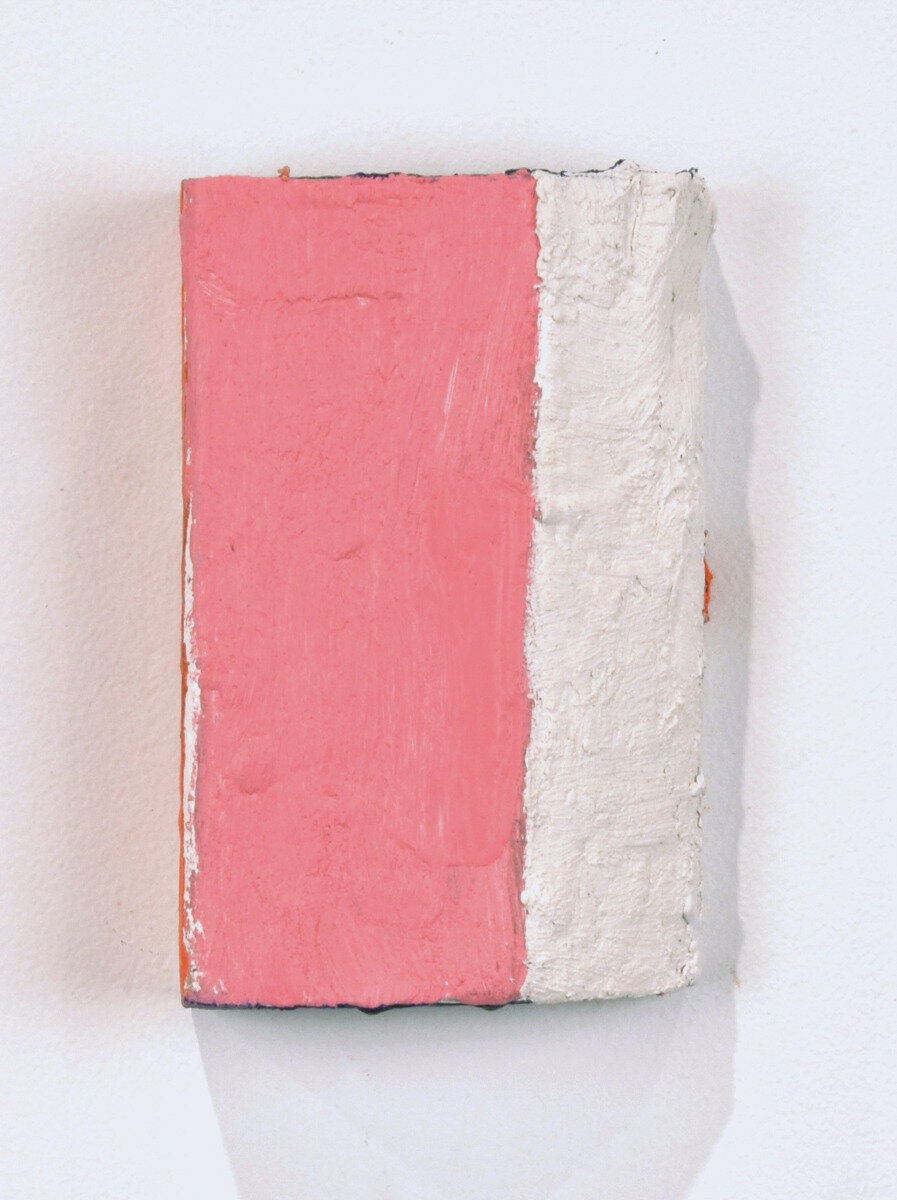


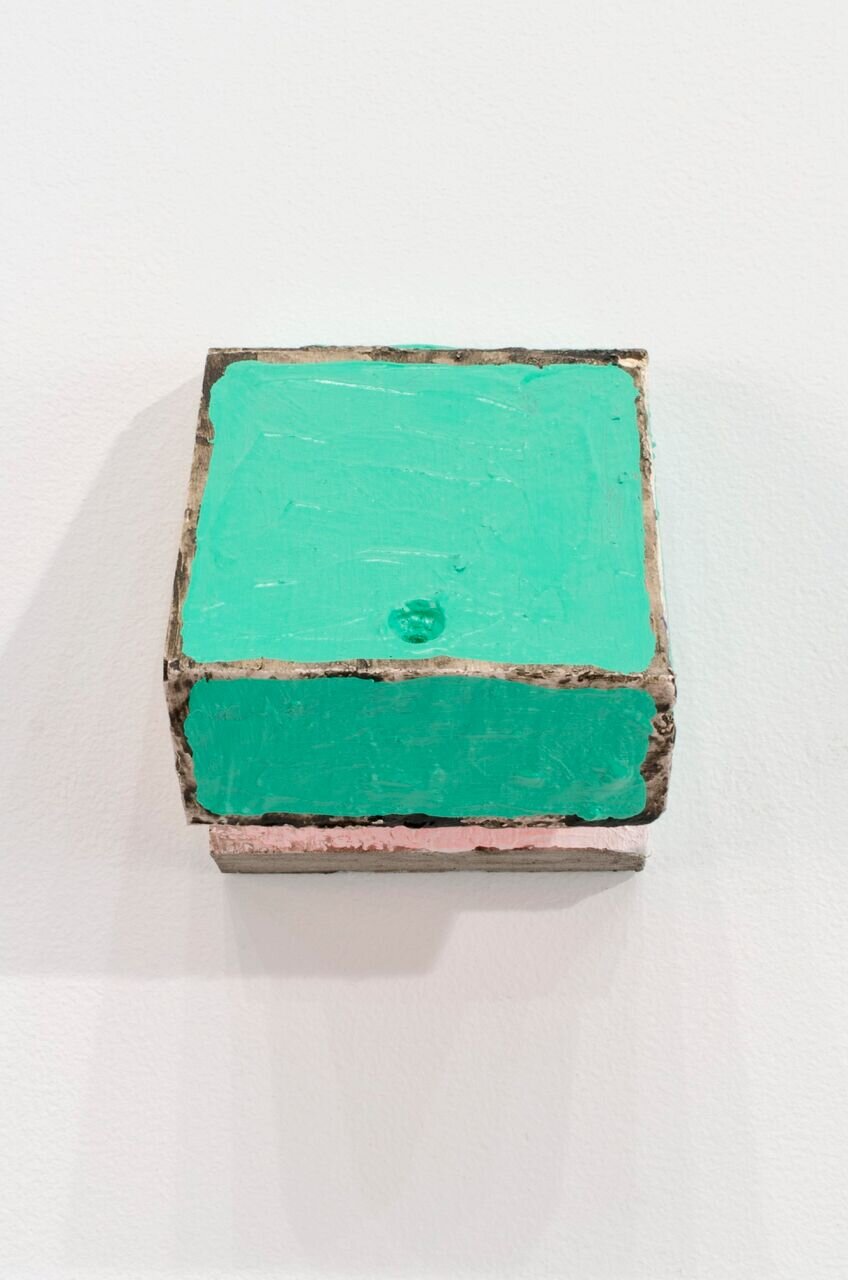
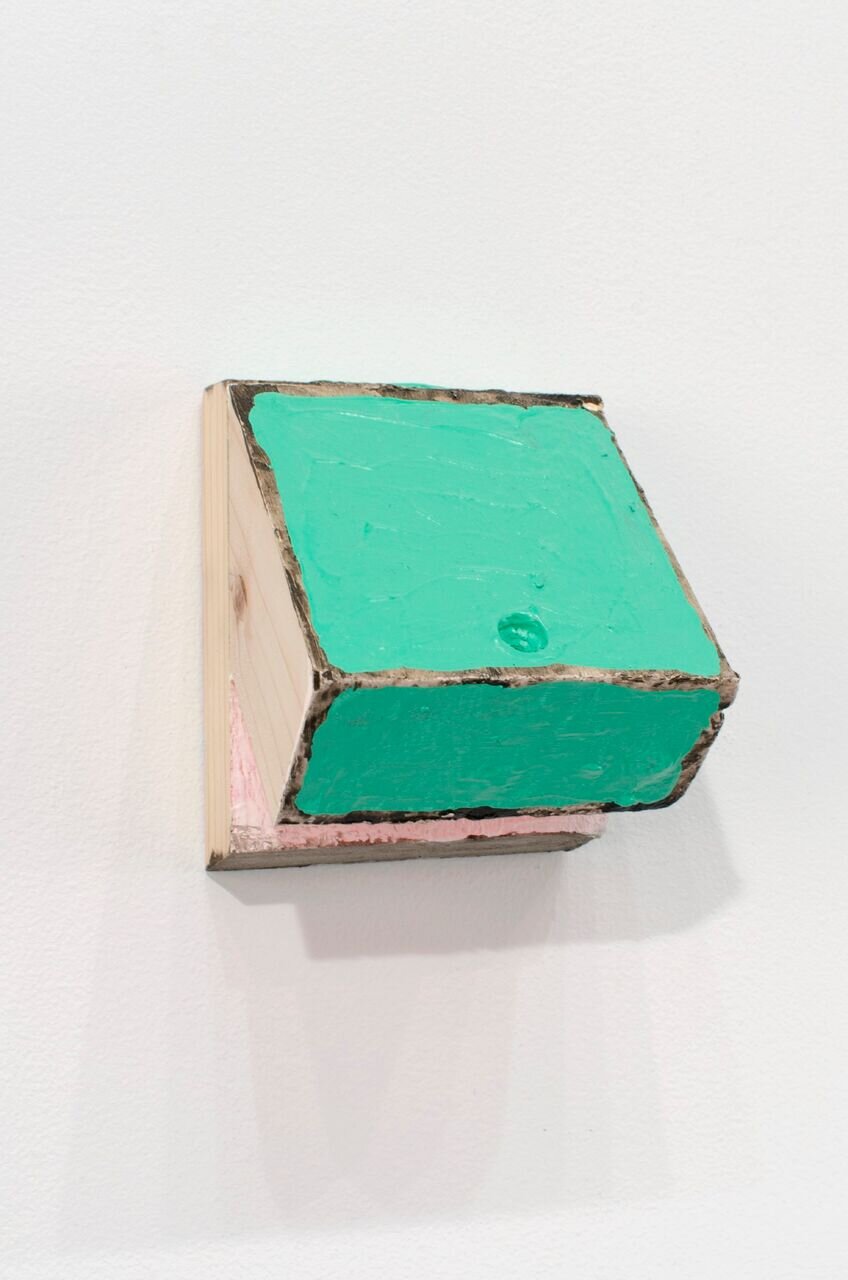
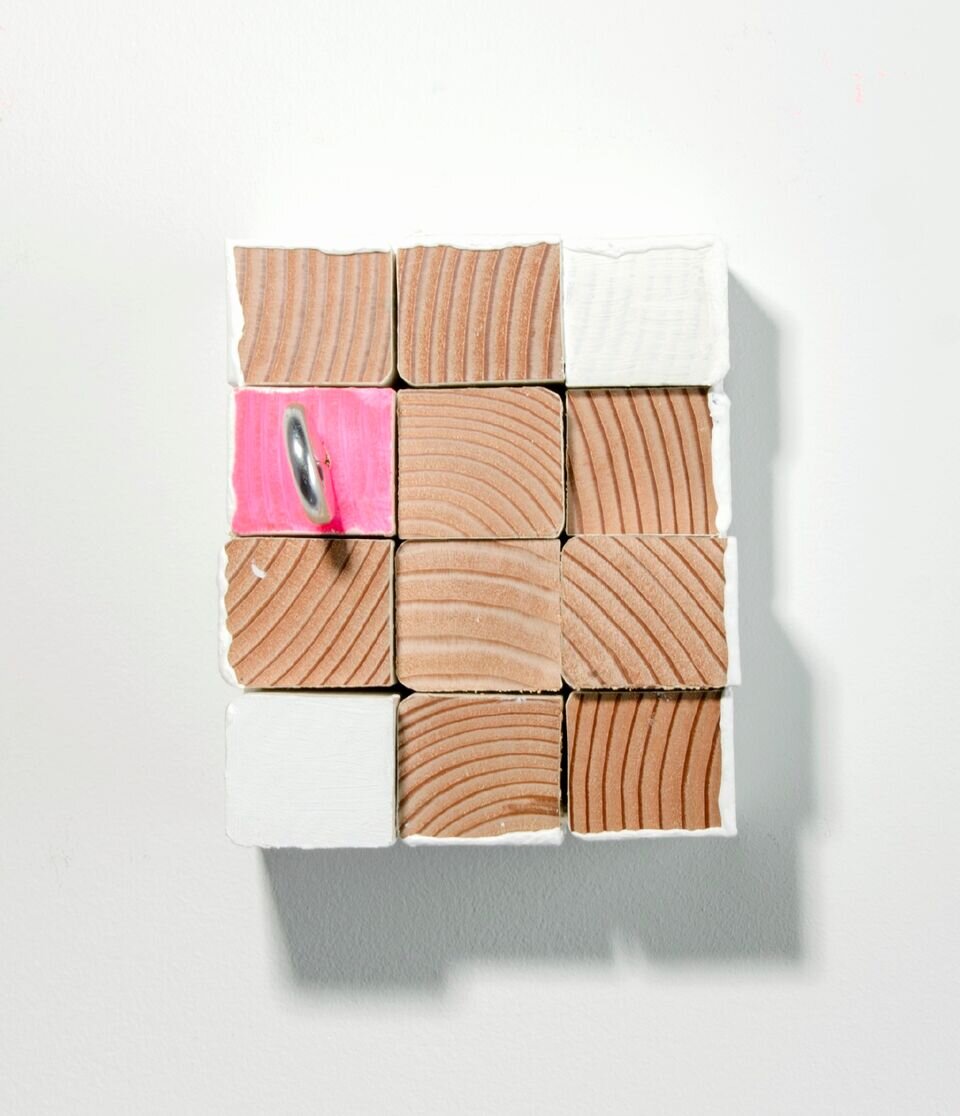
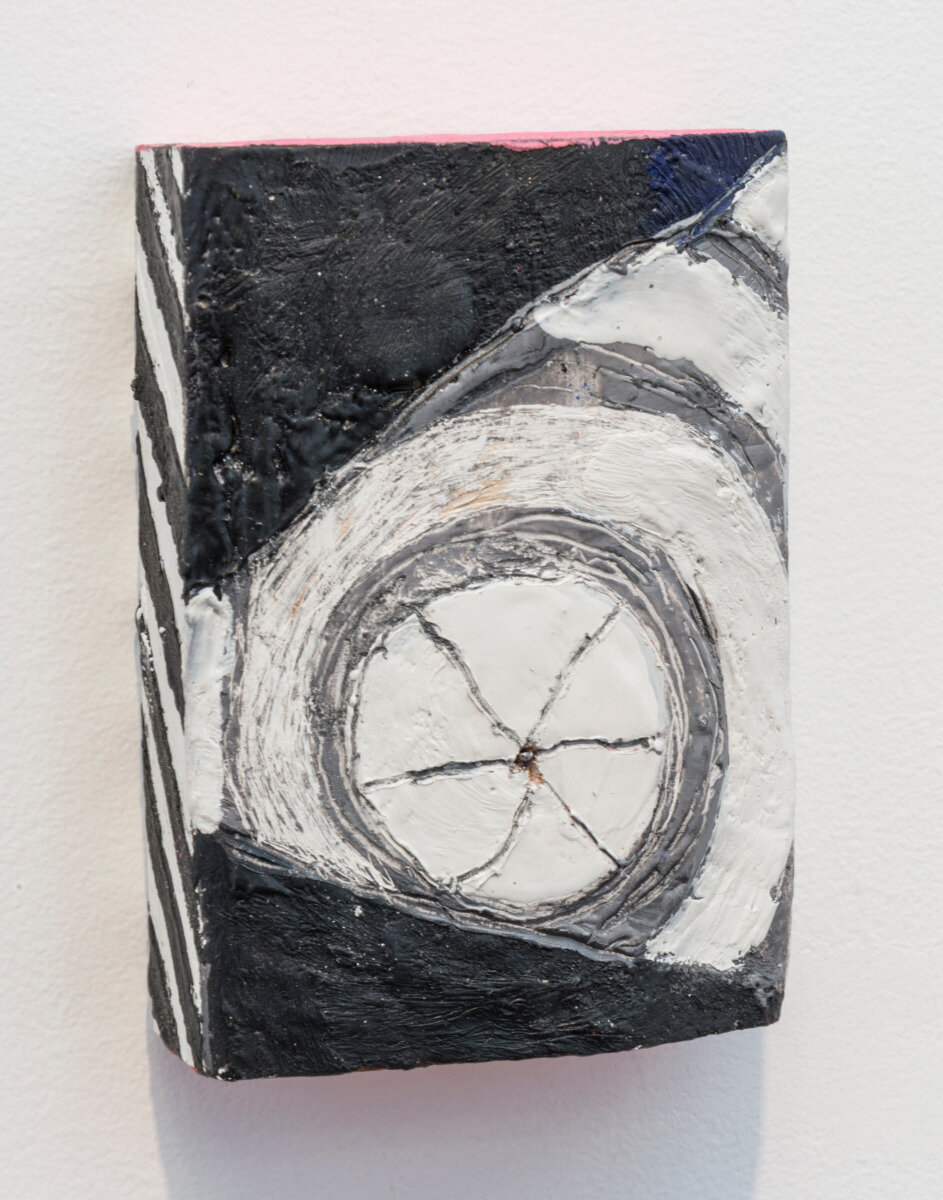
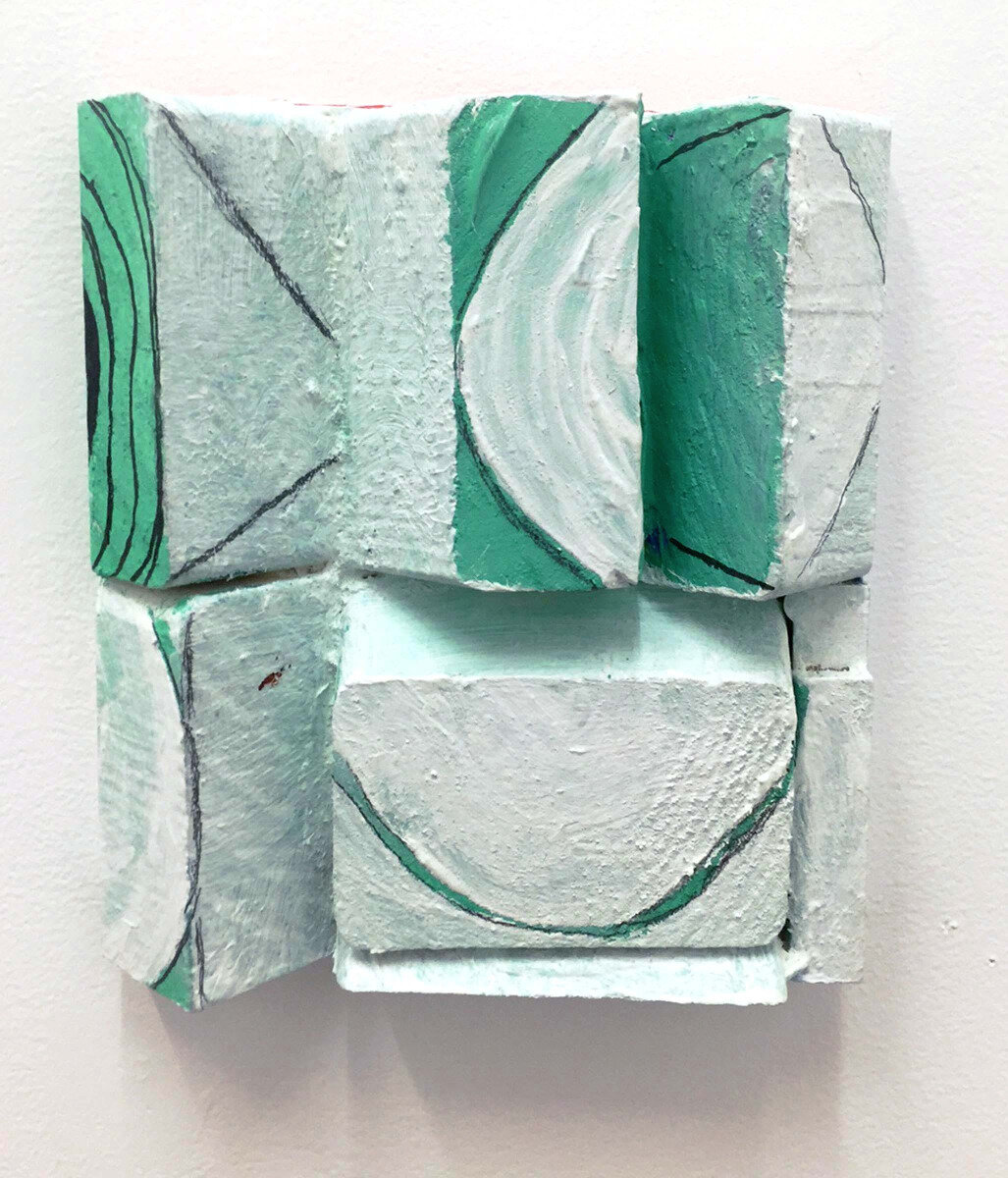

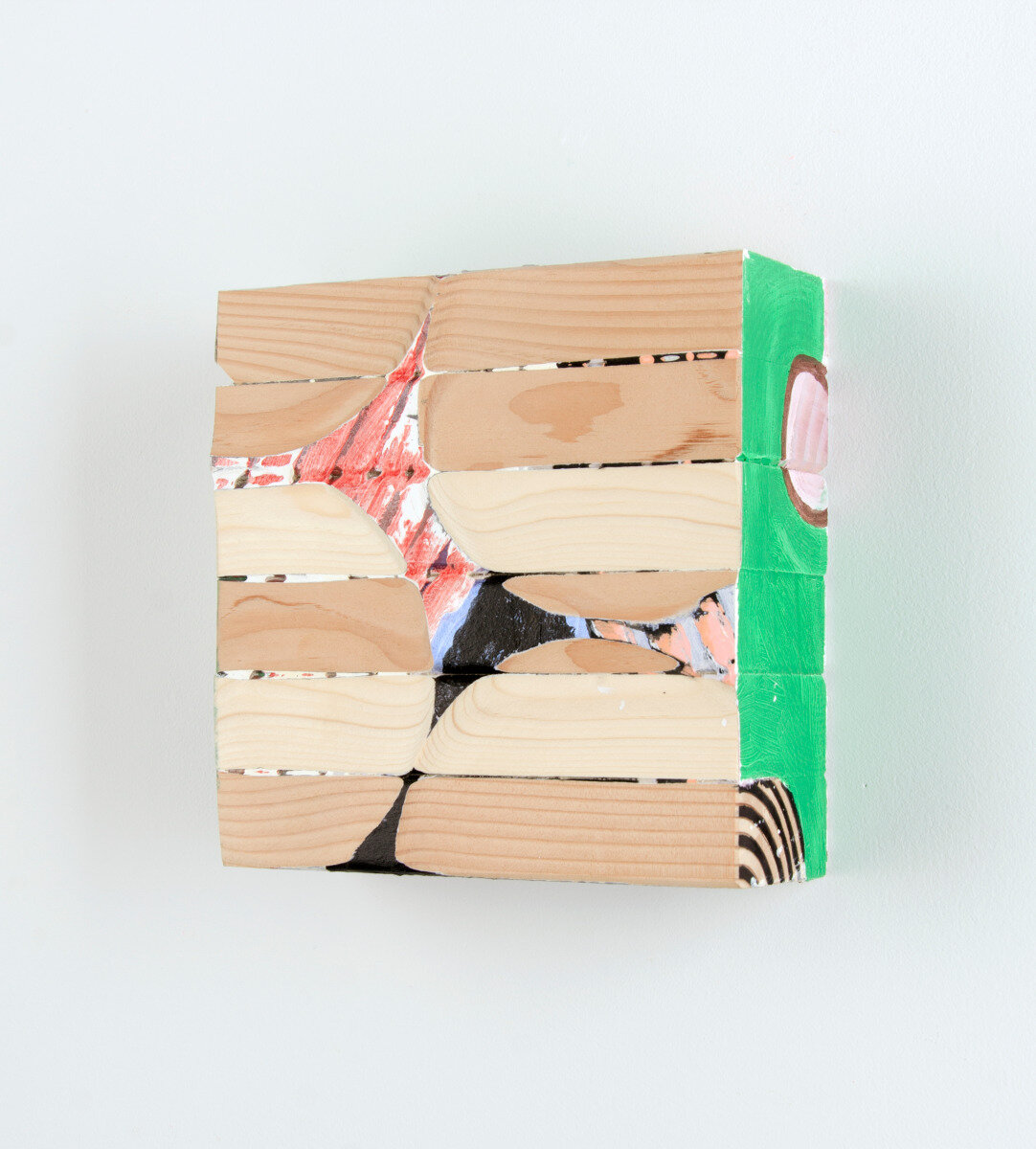
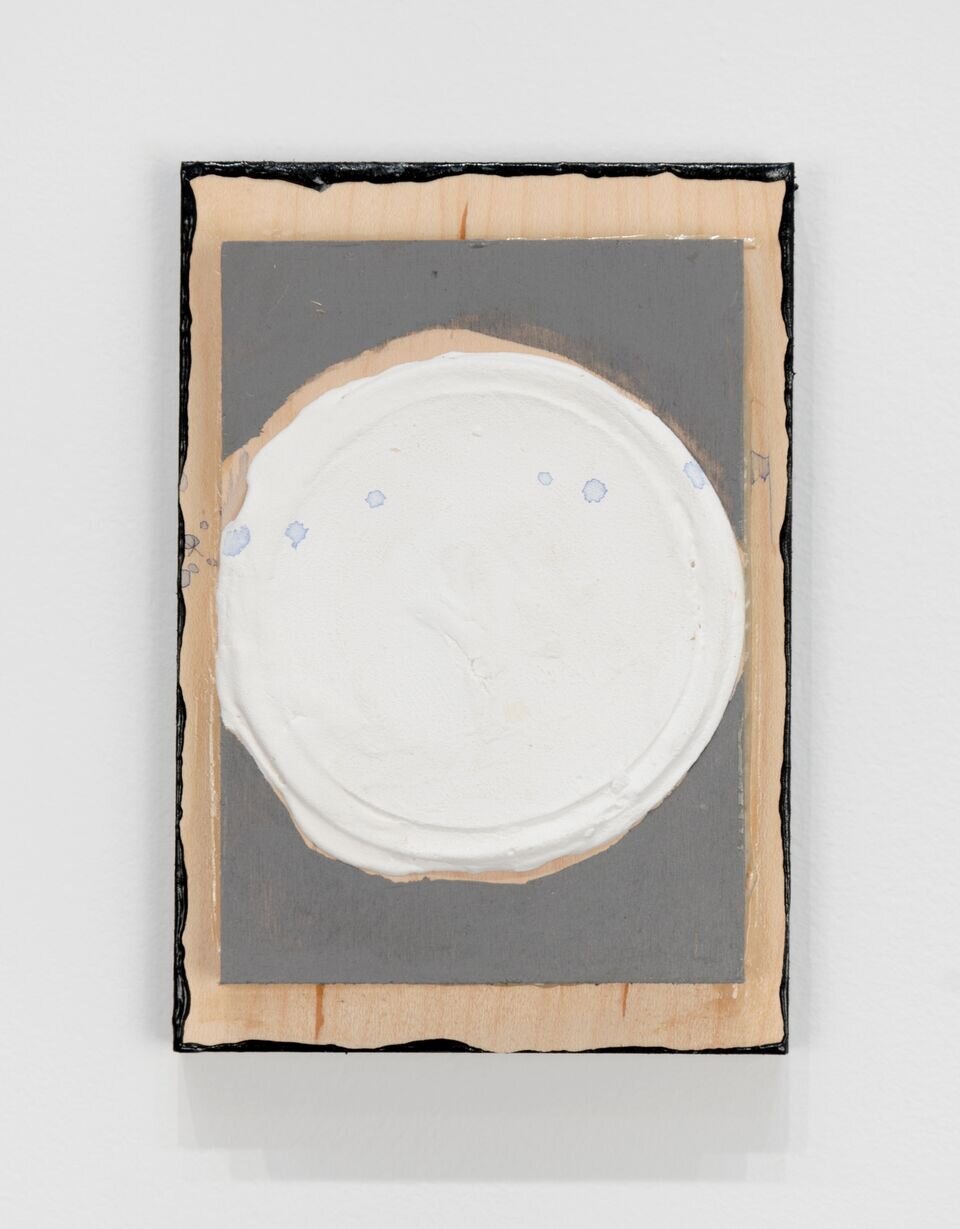

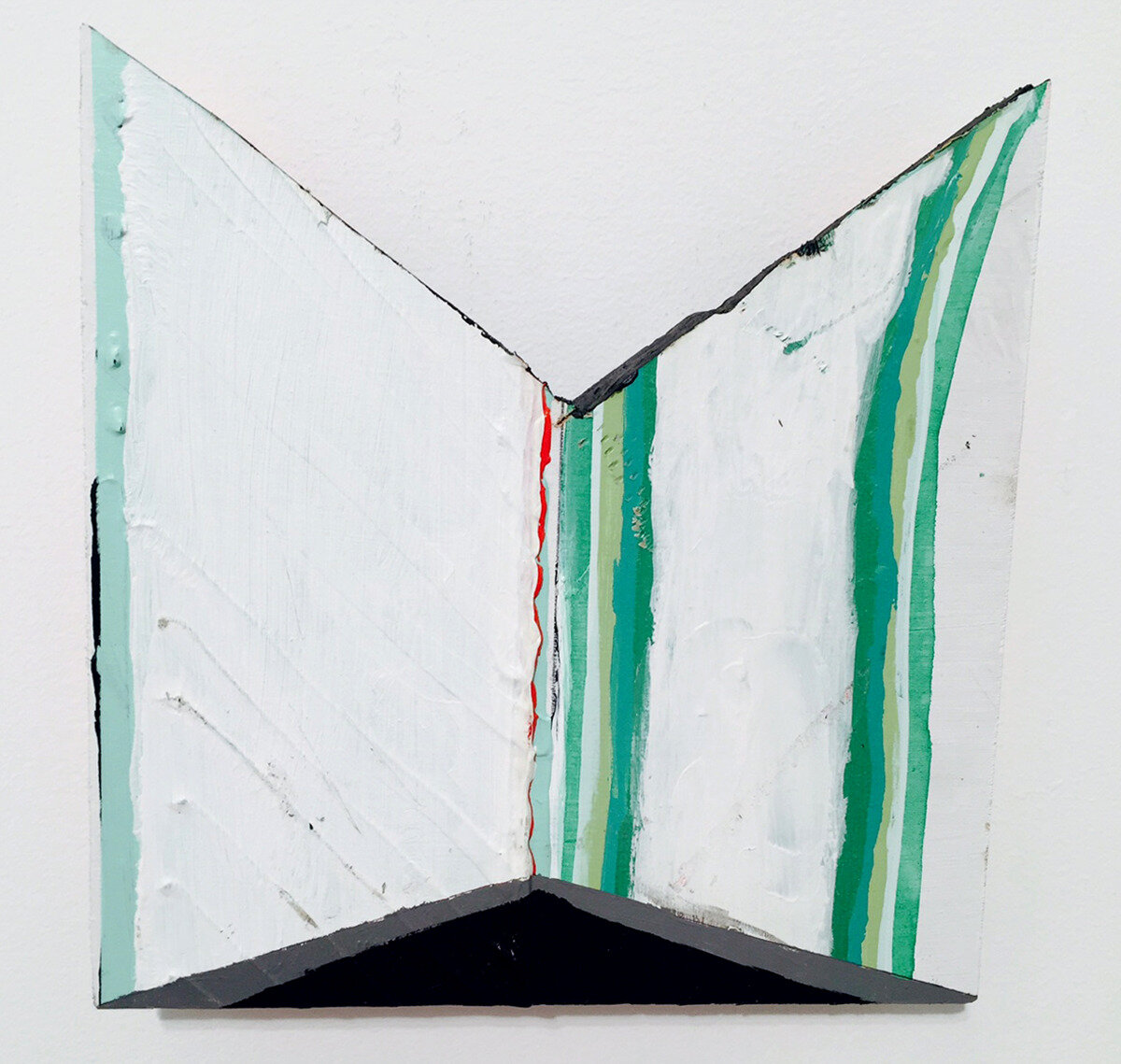
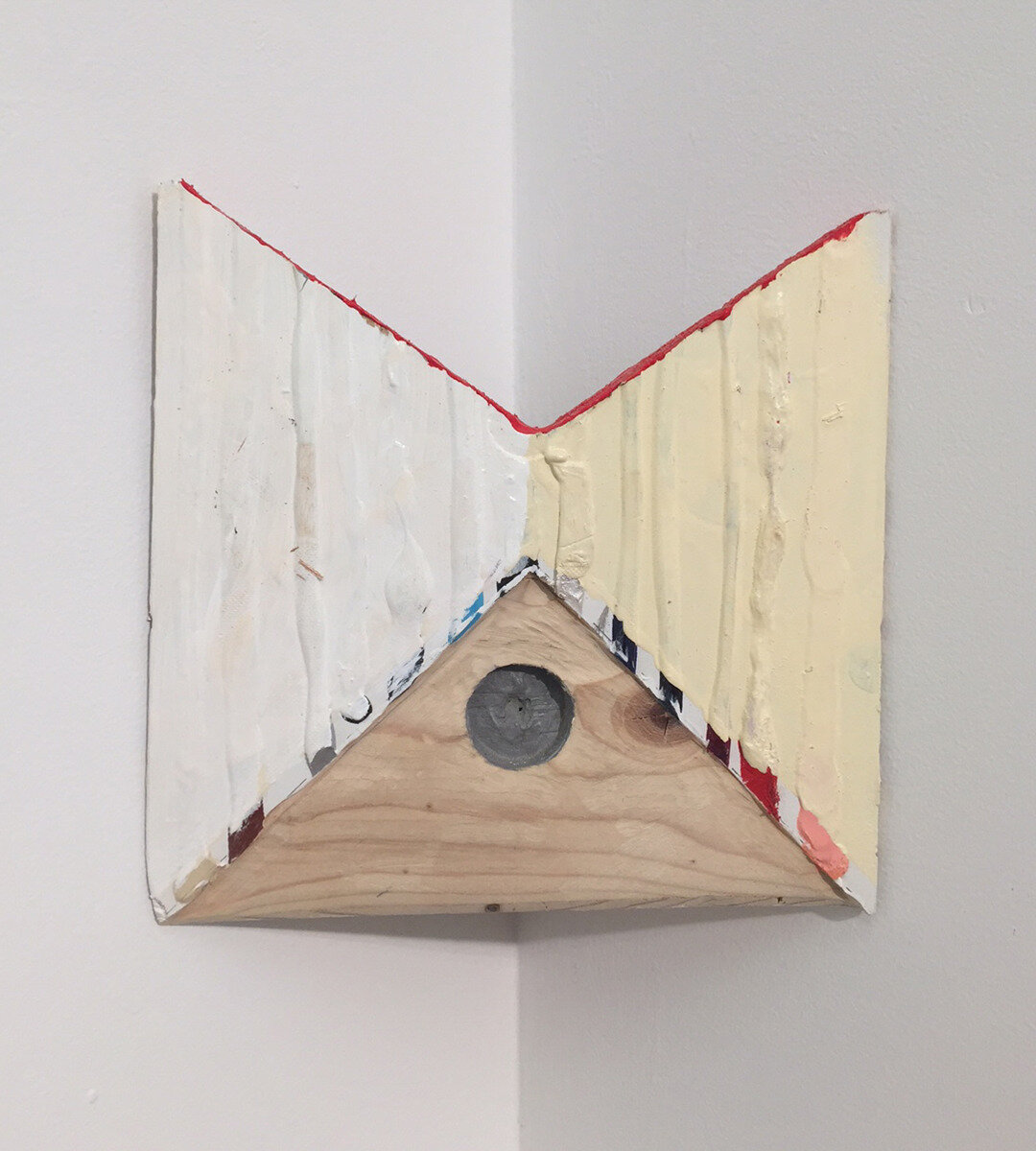
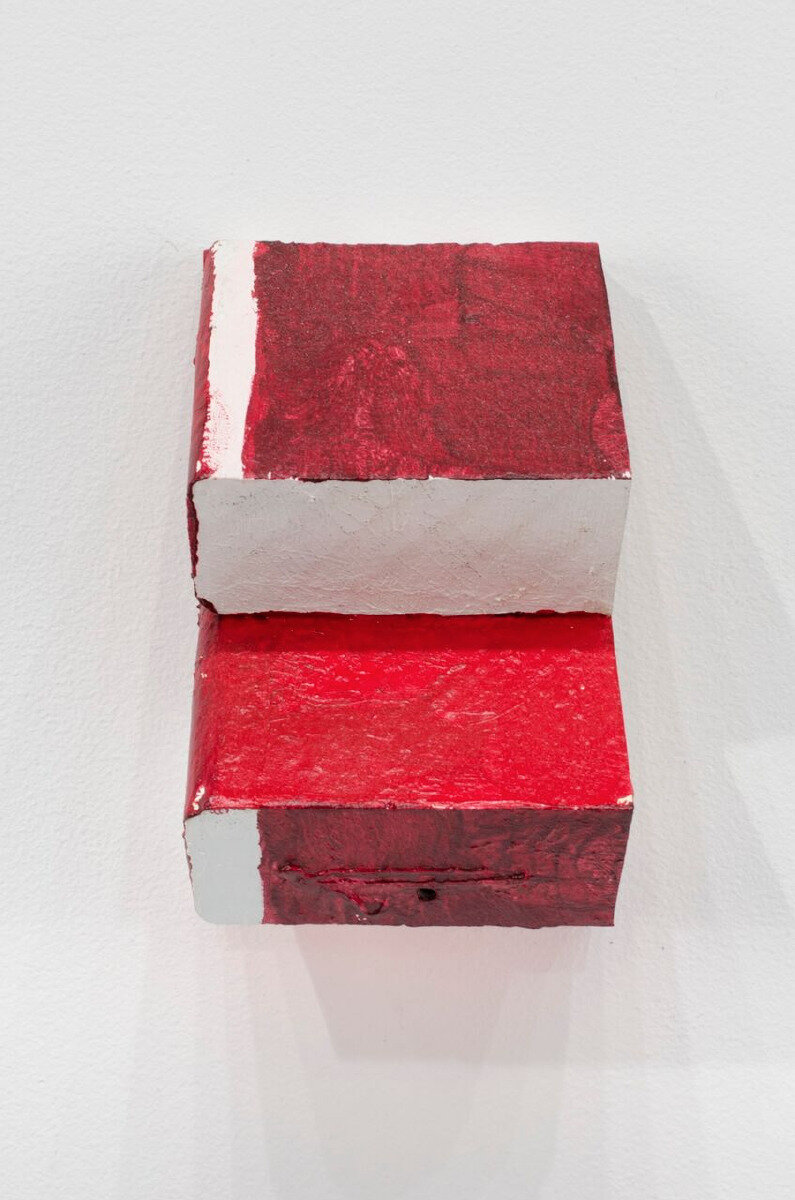
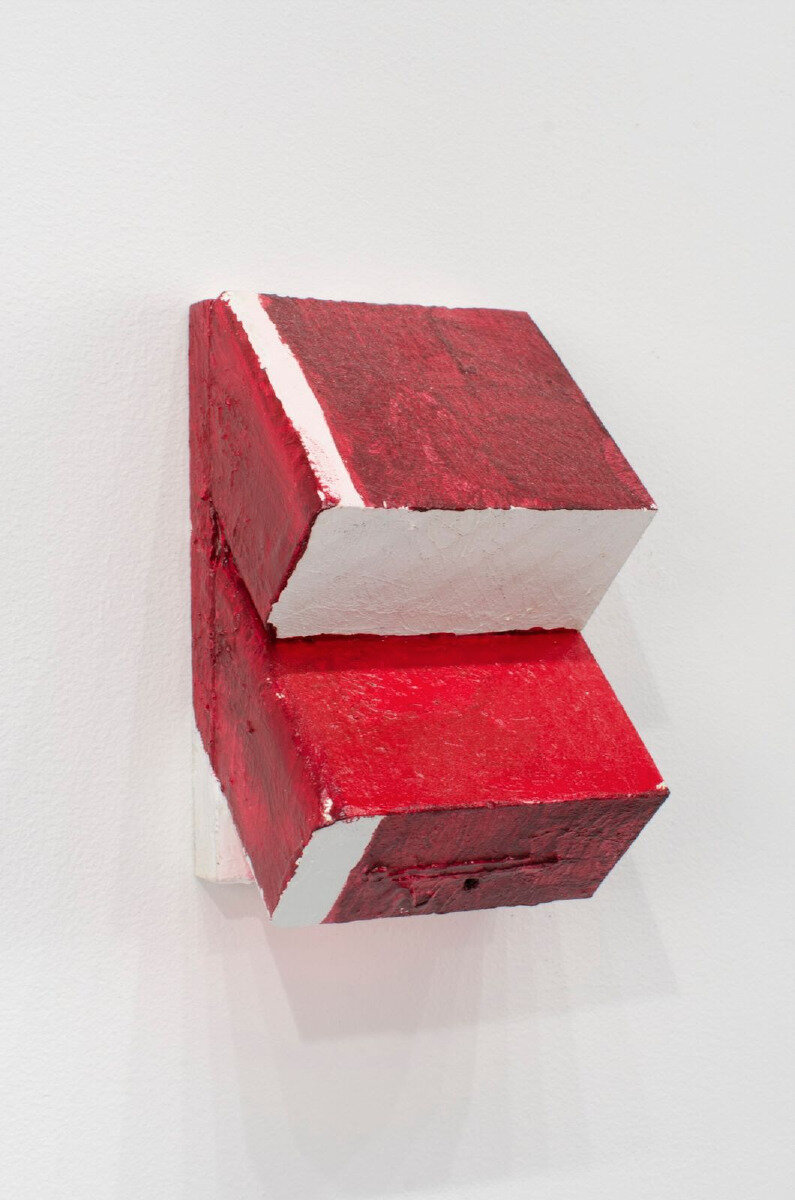
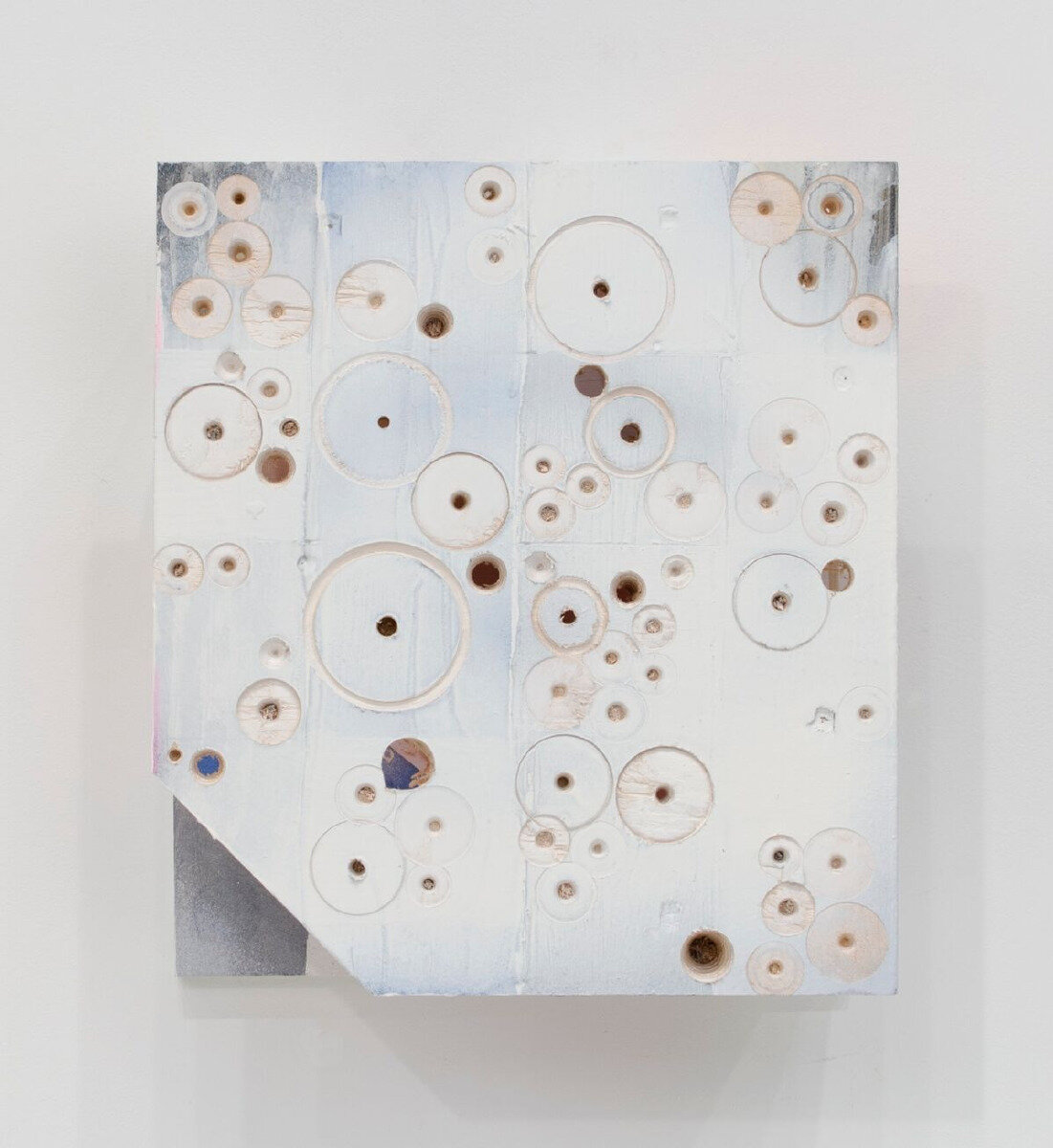

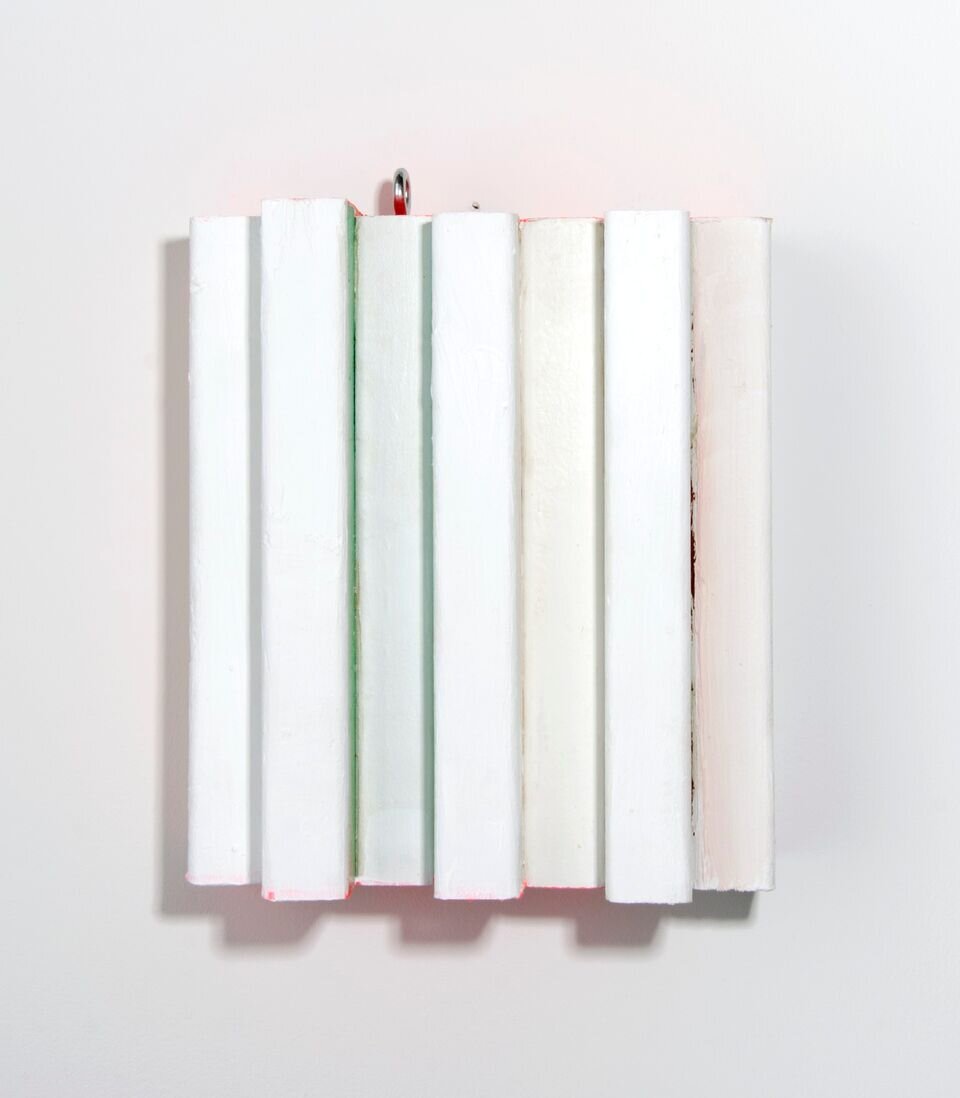

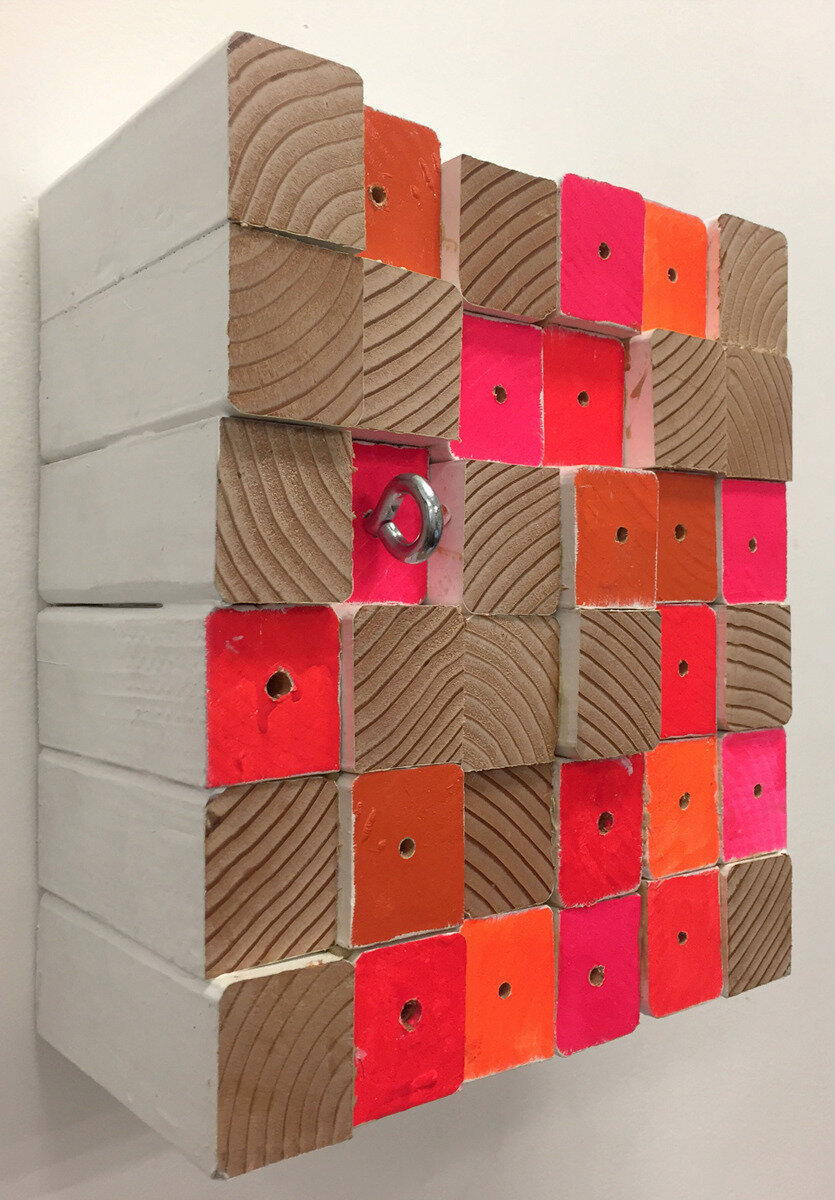
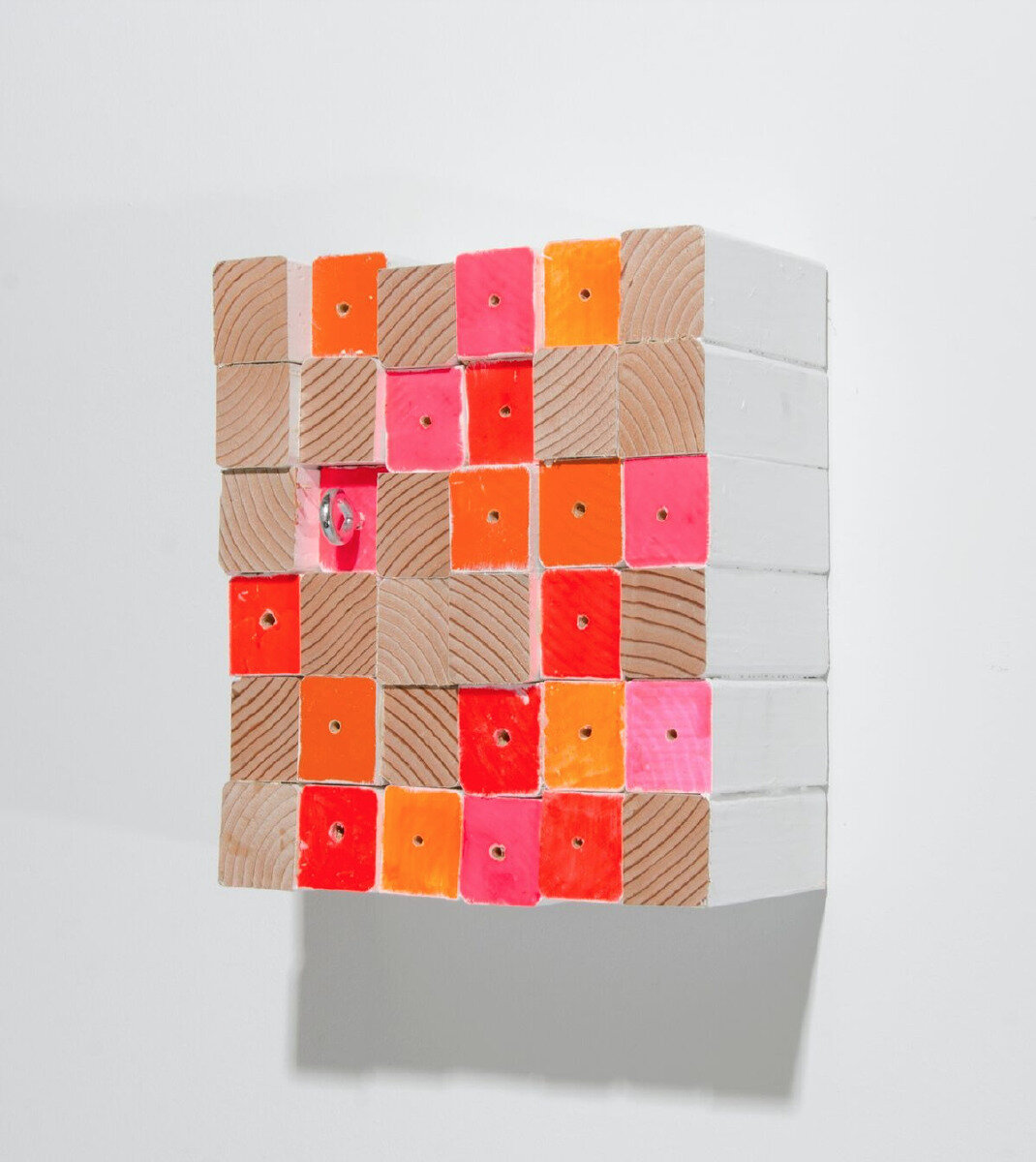
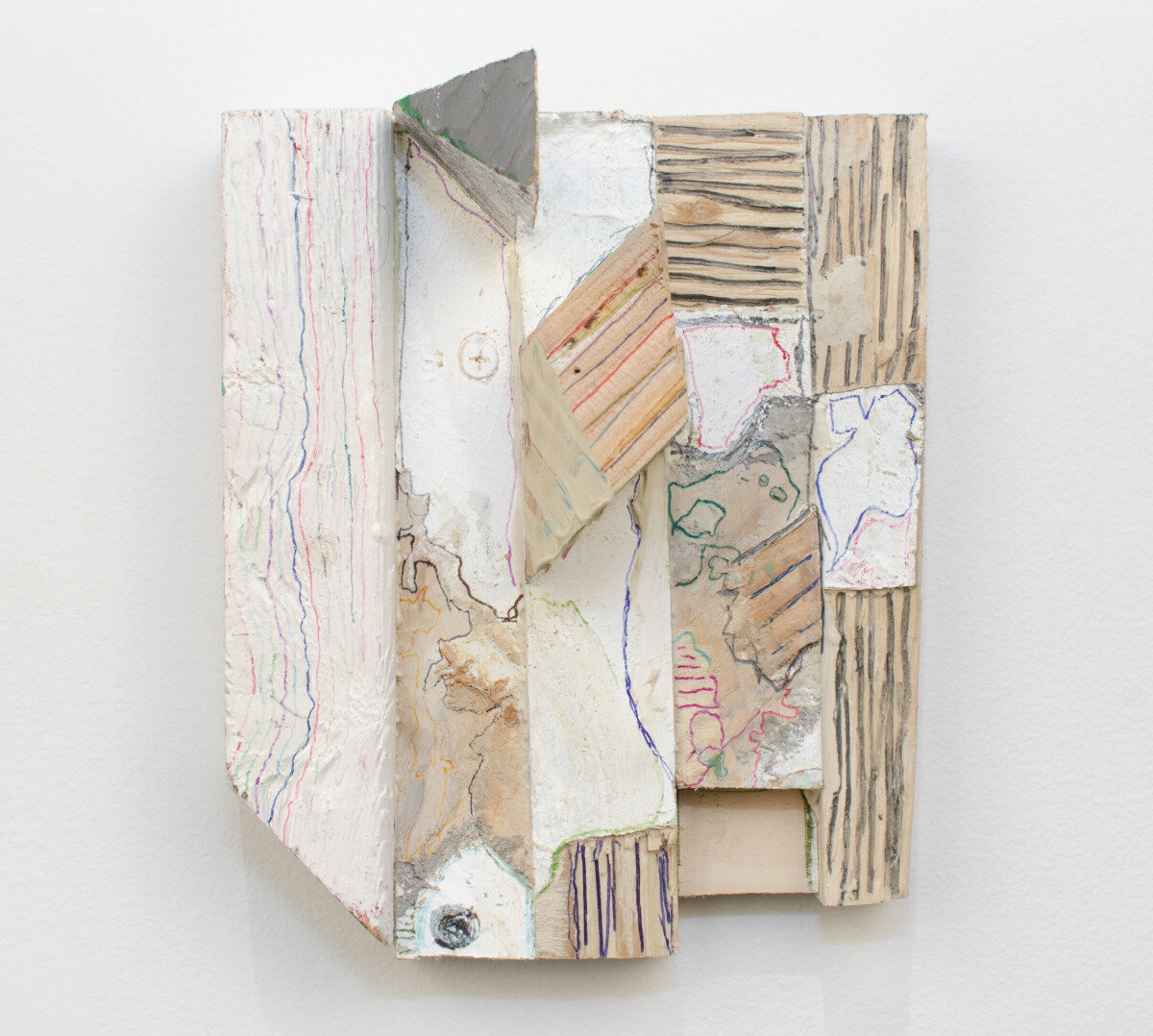
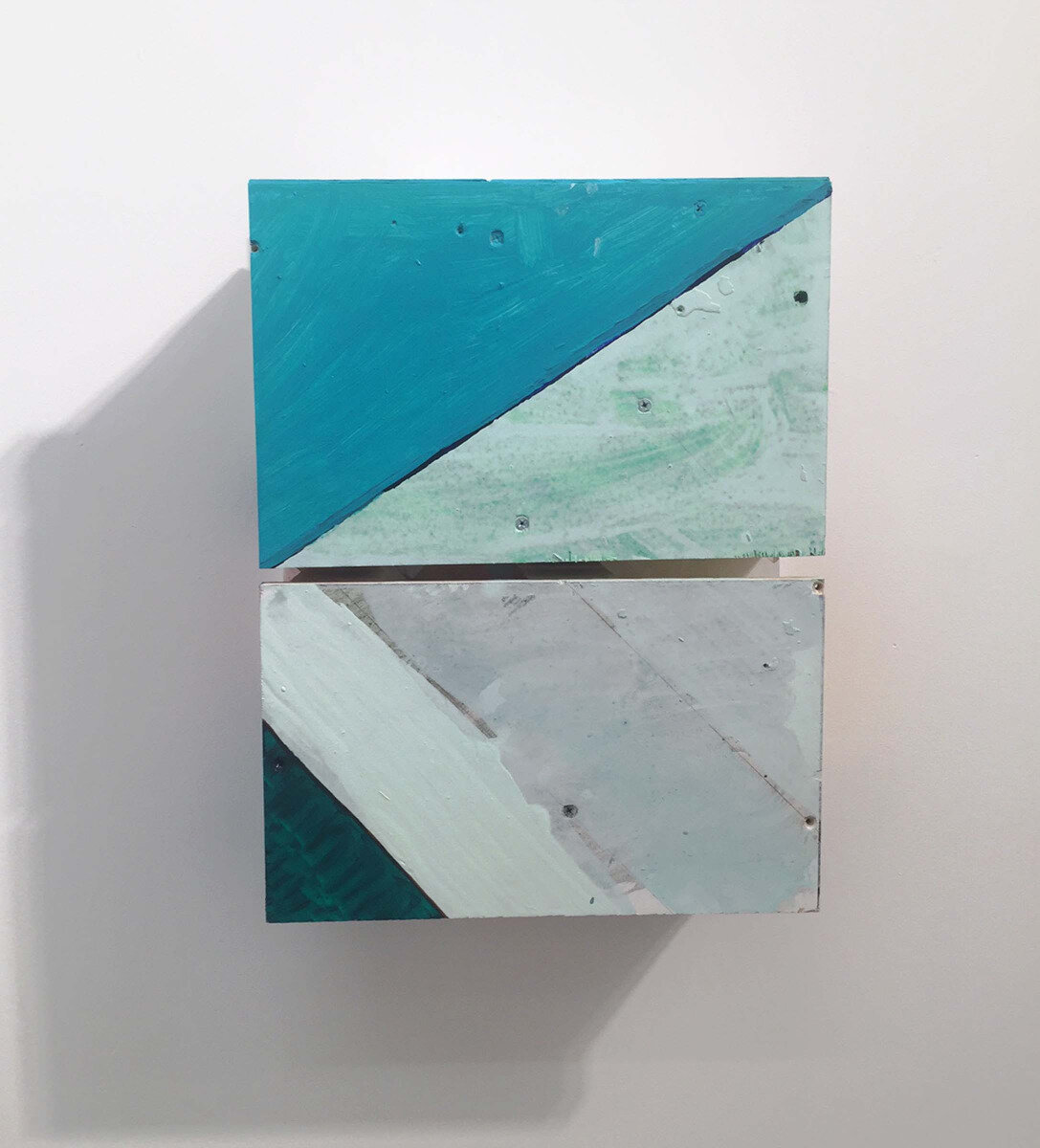
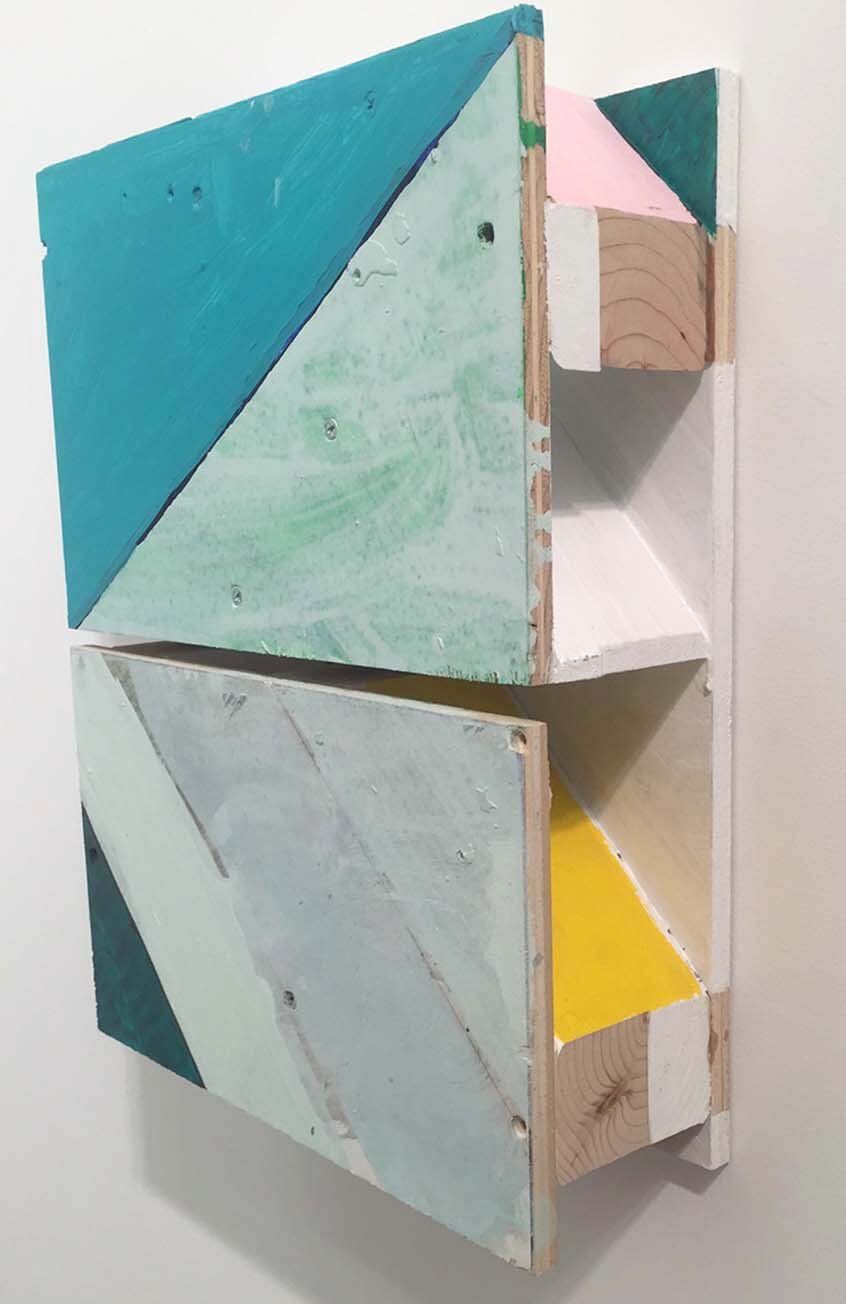
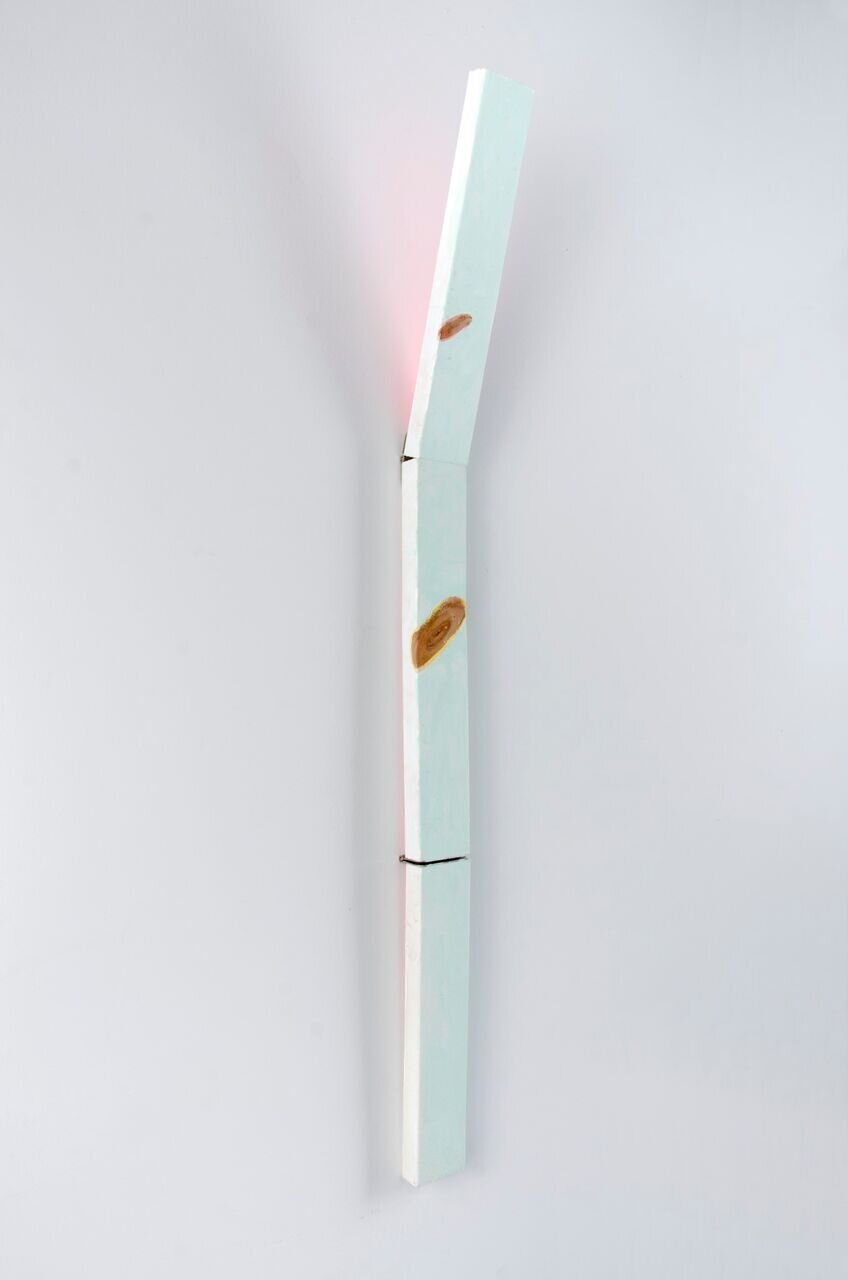
Cordy Ryman
September 15 - November 12, 2016
PRESS:
”Simple Pleasures” by John Yau, Hyperallergic
Cordy Ryman’s work is based on installation, painting, sculpture and architecture as well. Cordy Ryman’s practice is characterized by recycled wood, metal, cardboard, scrap metals and a large variety of industrial paints including acrylic, spray or fluorescent paints used for signs. When working with wood, he always keeps the rough jagged edges visible. This creates a very tactile surface which reveals a tight connection to the human hand.
Ryman alters the surfaces of his artwork to change the appearance but still allows for the character of the materials to be recognized. Ryman’s practice is also based on appropriation, reworking older works to fit a new configuration in a new space.
Cordy Ryman’s work is colored but the principle applied is a specific way in hiding the color by placing it on sides of a number of shaped pieces of wood to play mainly with an indirect or oblique vision of the color and its reflection. In the current exhibition, Emerald Halite (2016) is a new work but in the continuation of Chimera 45 made specifically for Zürcher Gallery in March 2015. Here again Cordy Ryman uses a number of shaped wood battens placed parallel. They are painted white but several sides are painted green and blue and closely associated with each other. They are anchored to the wall in roughly triangular and square formations. The nature of the relationships they create among themselves is due to the repetition of forms, an effect of resonance, like echoes spreading around. As rightly noted by Mary Birmingham(1): « While sonic echoes diminish and gradually fade, the echoes in Ryman’s art seem to grow stronger as they reverberate. »
Melville (2016) is a new installation made of wooden bars simply placed parallel against the wall to create a big wave so that by sliding from one side to the other, the eye follows the vibrant color waves breaking and reflecting endlessly. This effect goes beyond the visual and reaches a physical level, inciting the viewer to move.
If Cordy Ryman conjures the ocean and the infinite wave motion, he also shows what he sees when the ocean retreated there for millions of years to give way to the desert: the white bones of a huge sea monster, like the skeleton of a whale Cordy Ryman imagined: Whalebones (2016) combines wooden elements placed parallel and articulated by hinges. A section is attached on the wall and one or two other wooden bar sections come after the hinges, going up to the ceiling and also down to and along the floor. No doubt Cordy Ryman here conjures another desert, the one produced by man when he exploits nature without respect. On the segments of wood the same colour reflection produces the same effect of a diffuse coloured light like vanishing traces of life.
Bernard Zürcher
(1) Mary Birmingham, « visible echoes », catalogue Cordy Ryman, Shuffle / Scrap / echo, Visual Arts Center of New Jersey, January-March 2013
